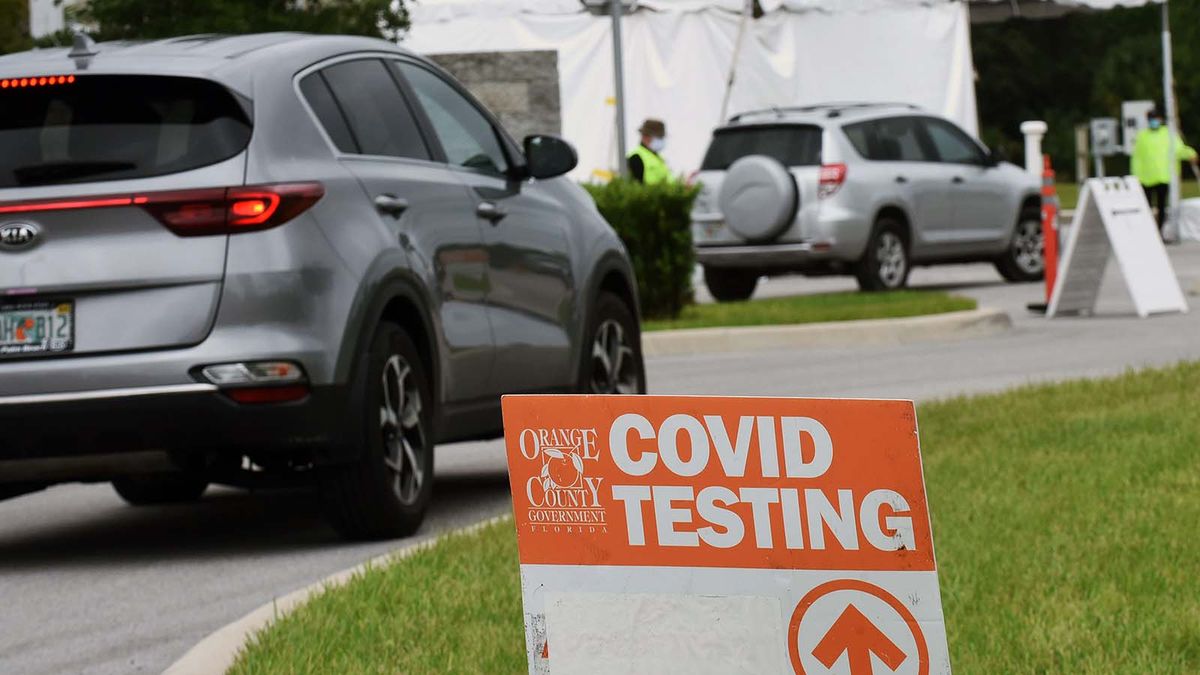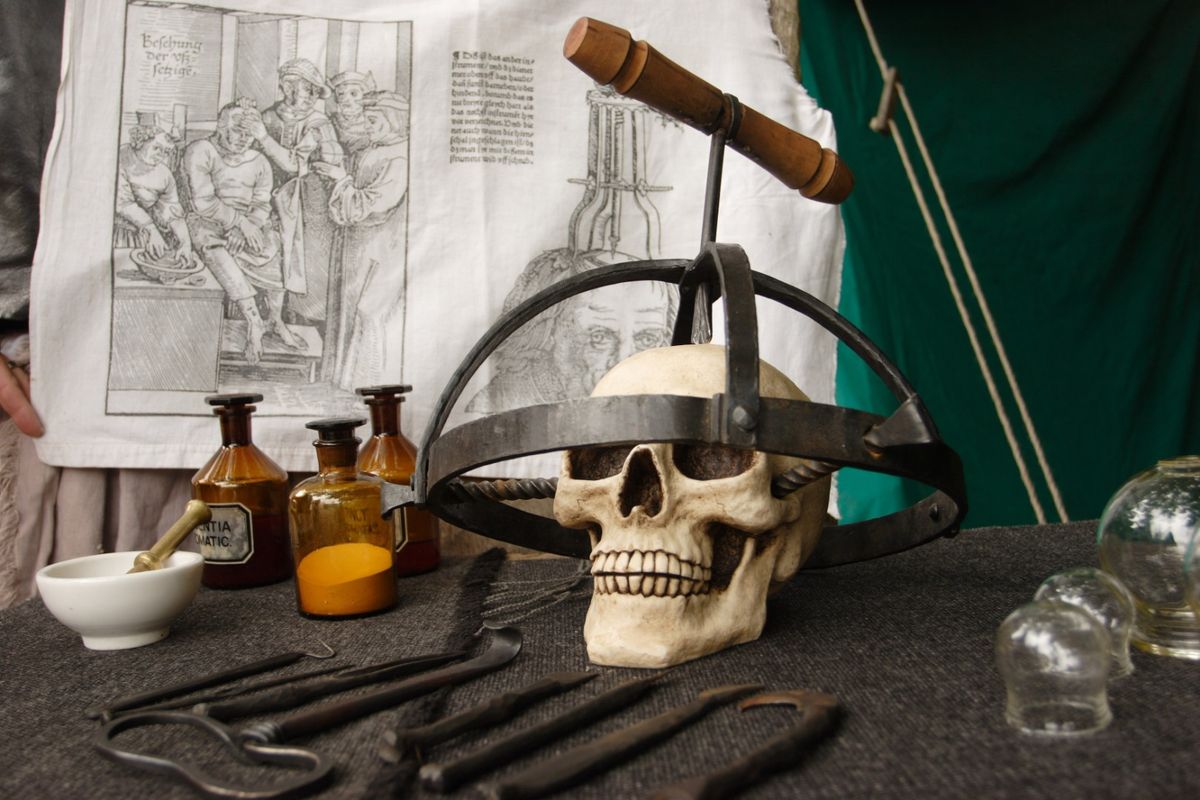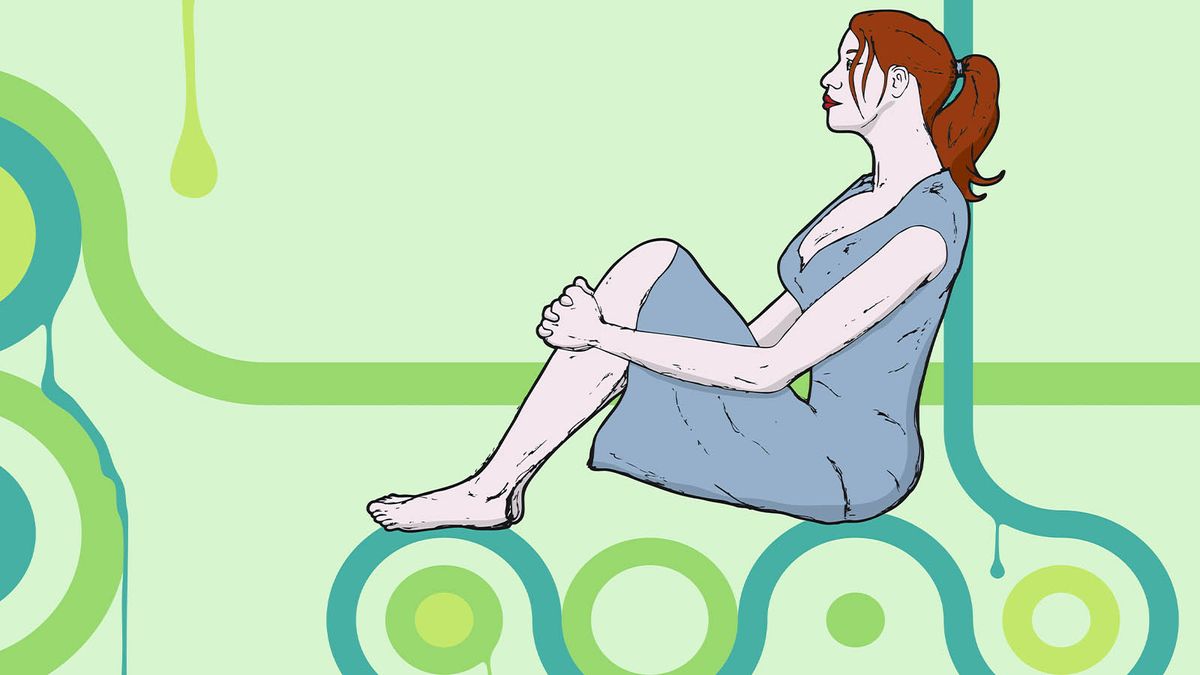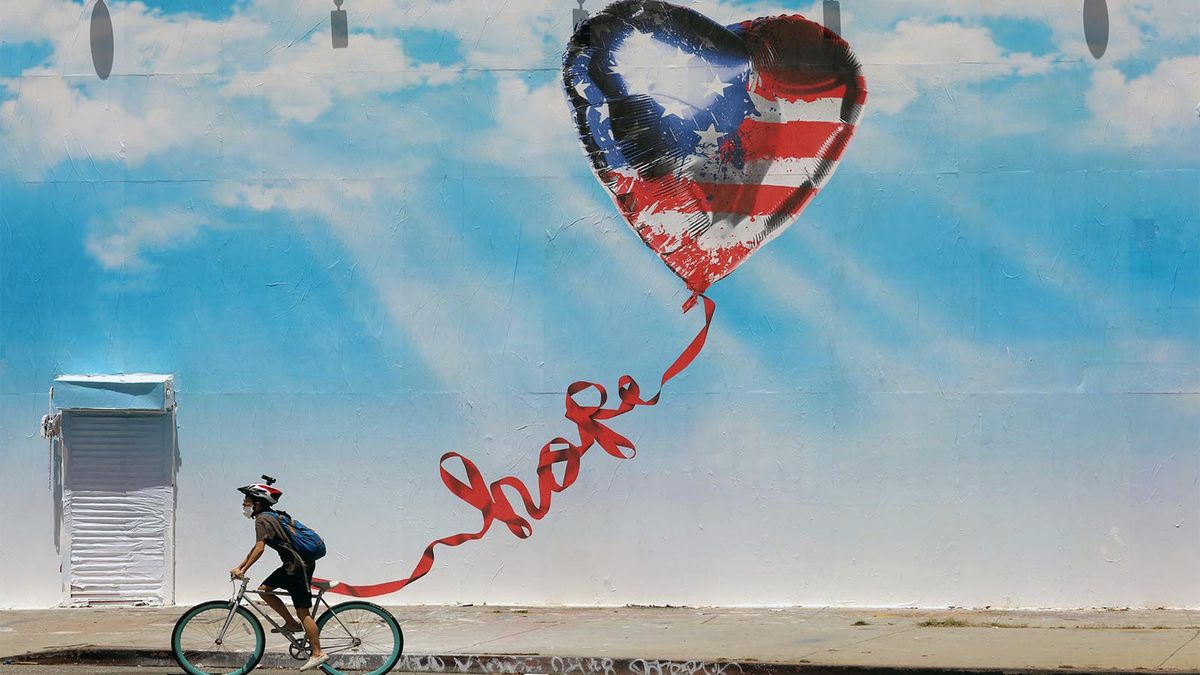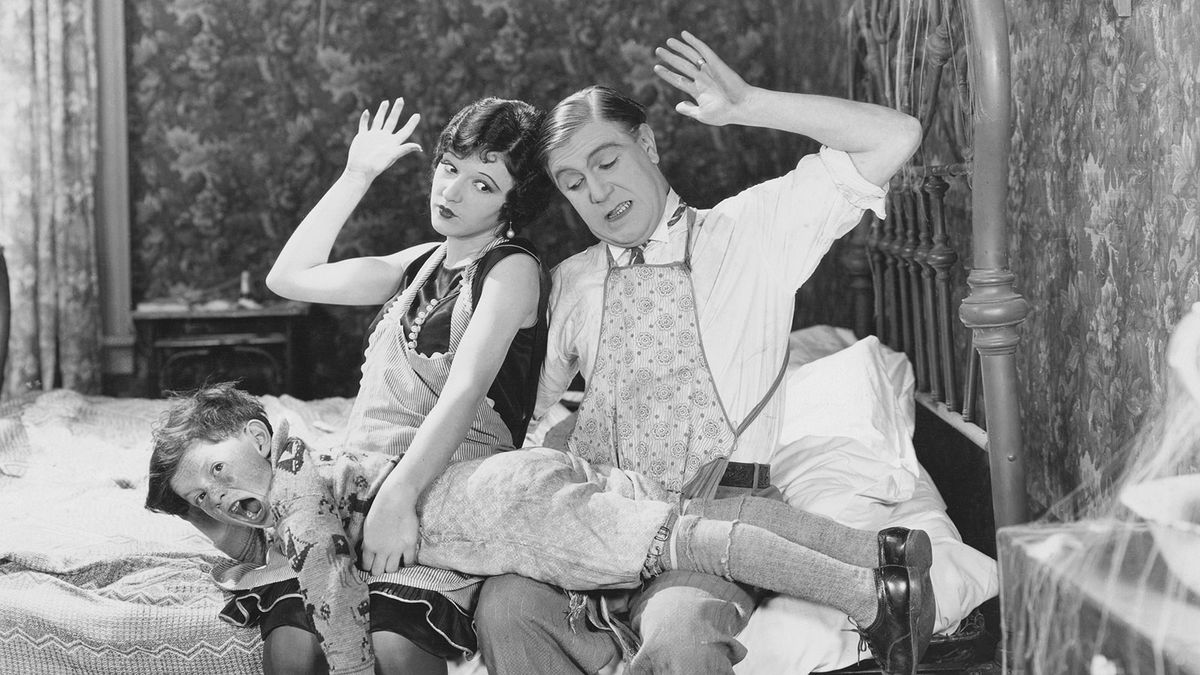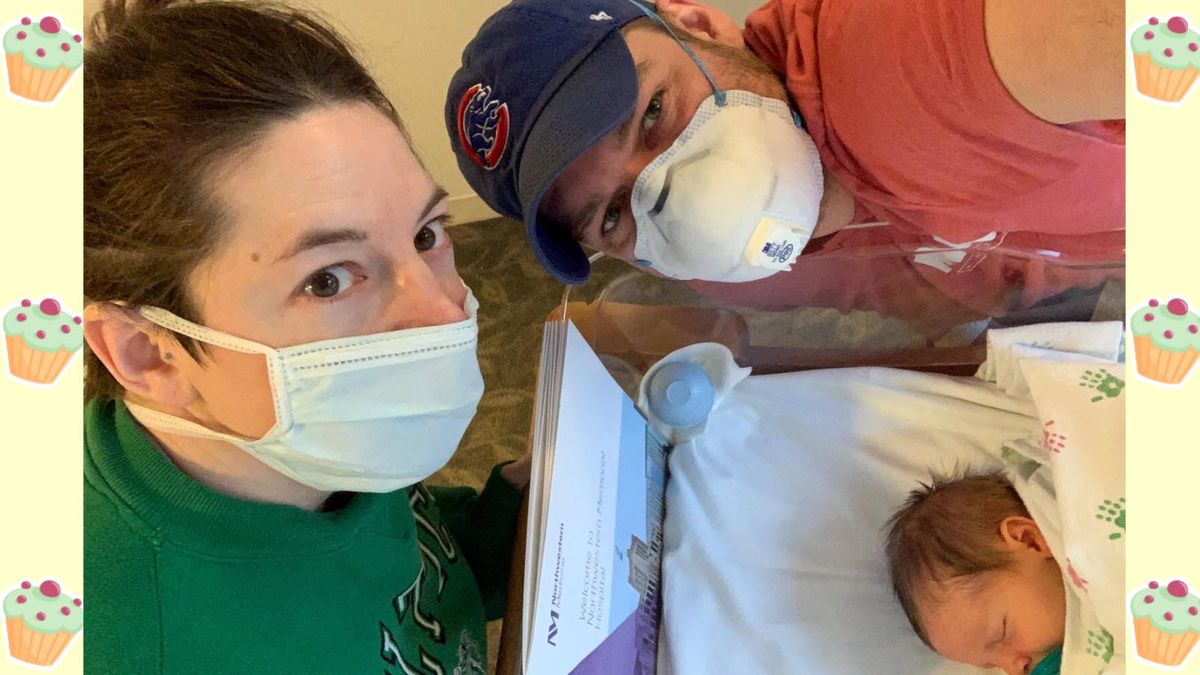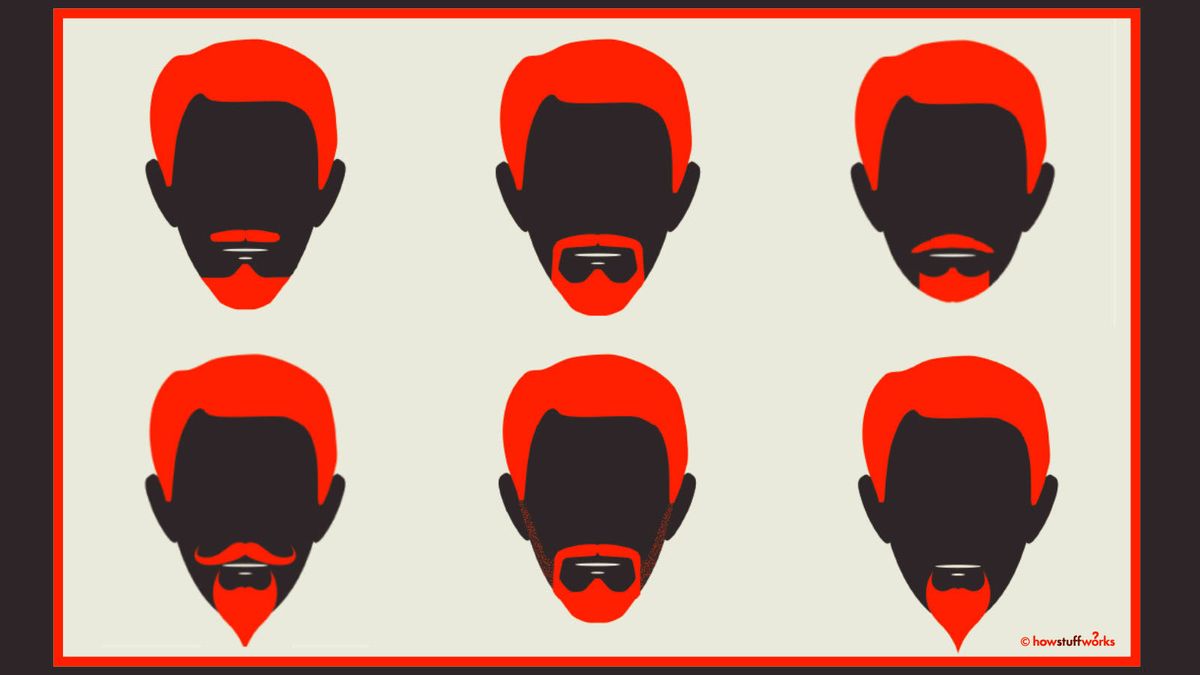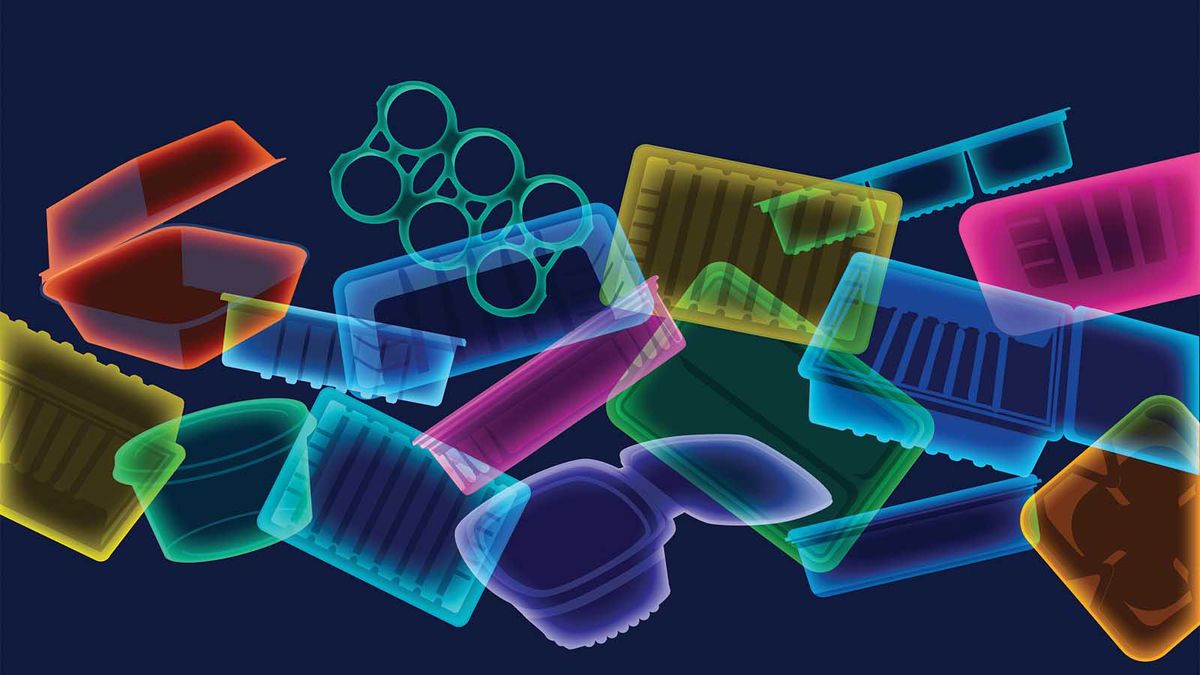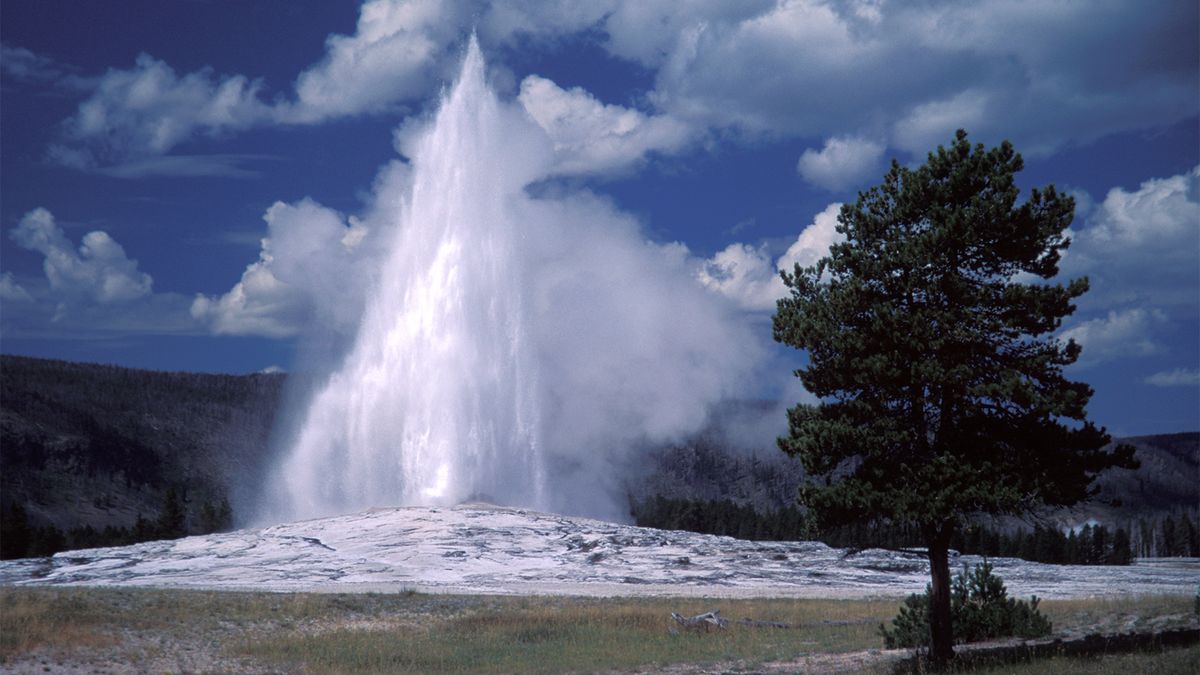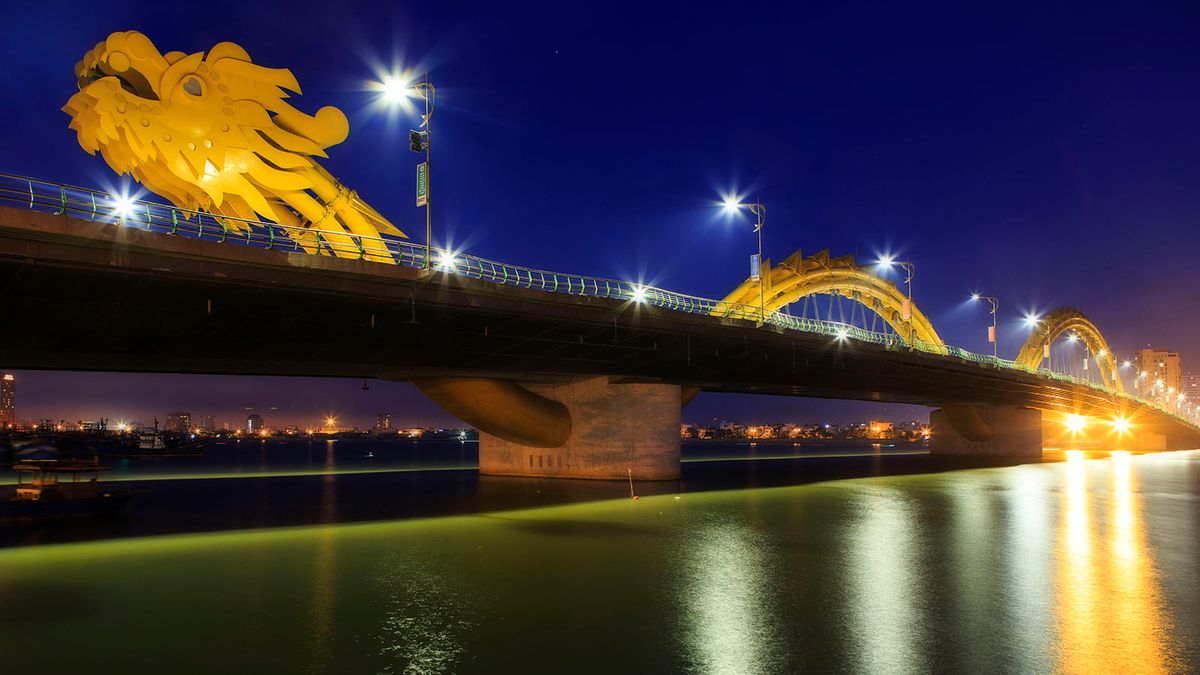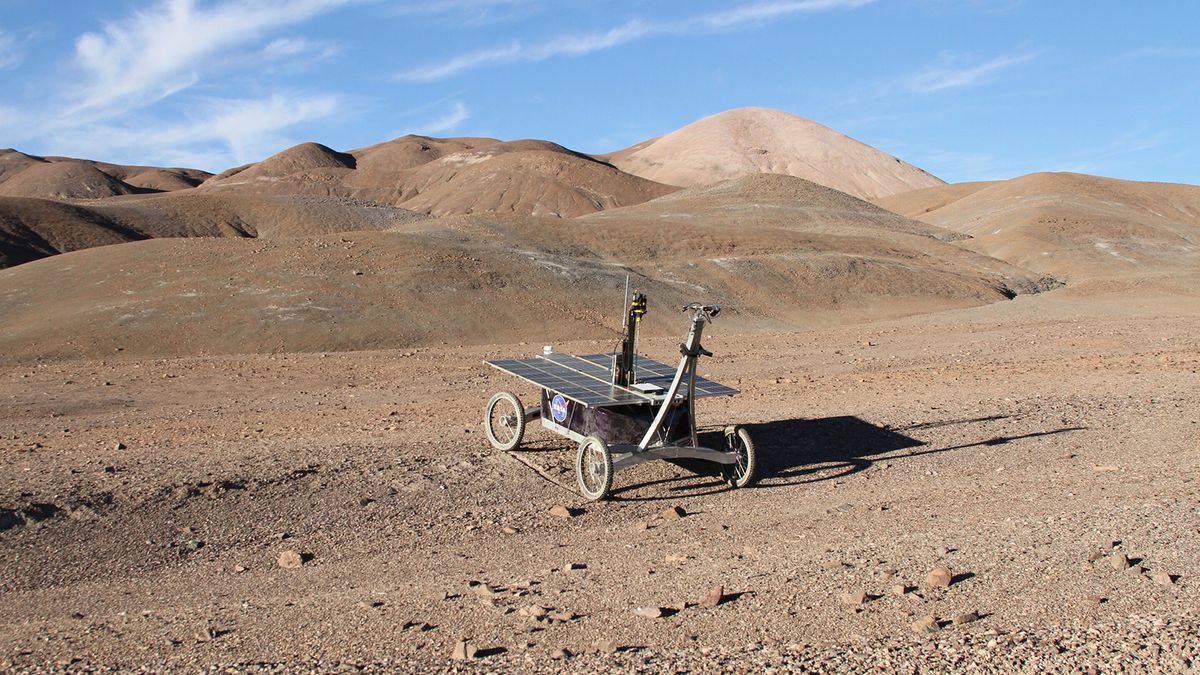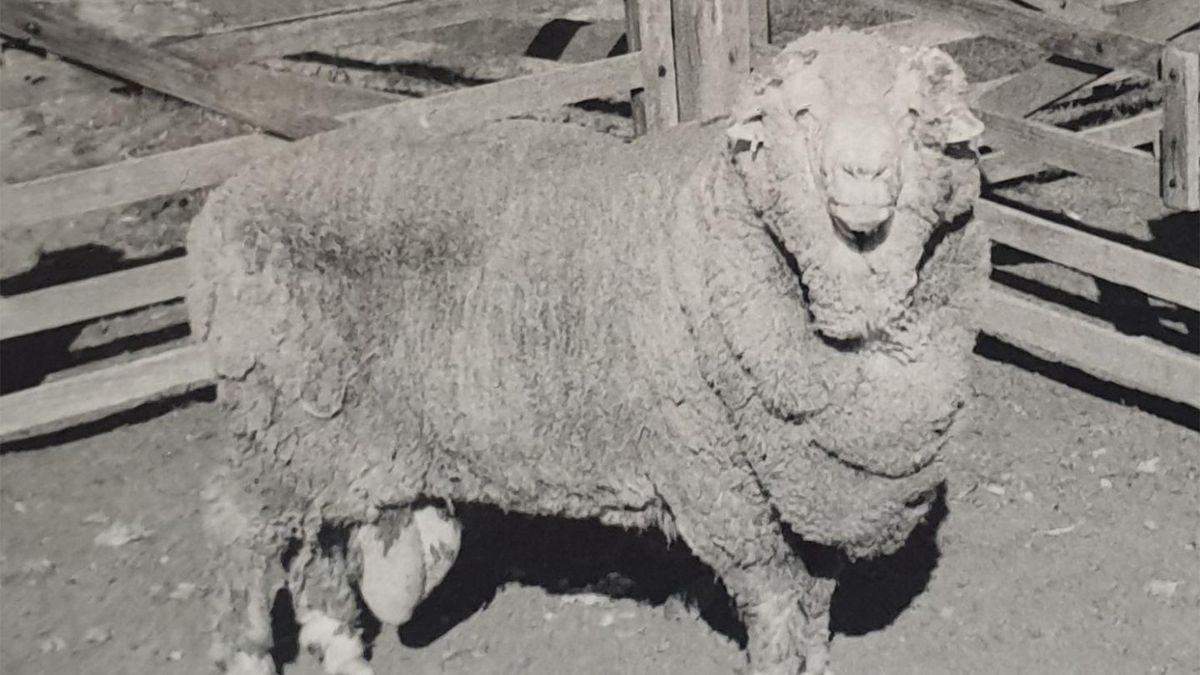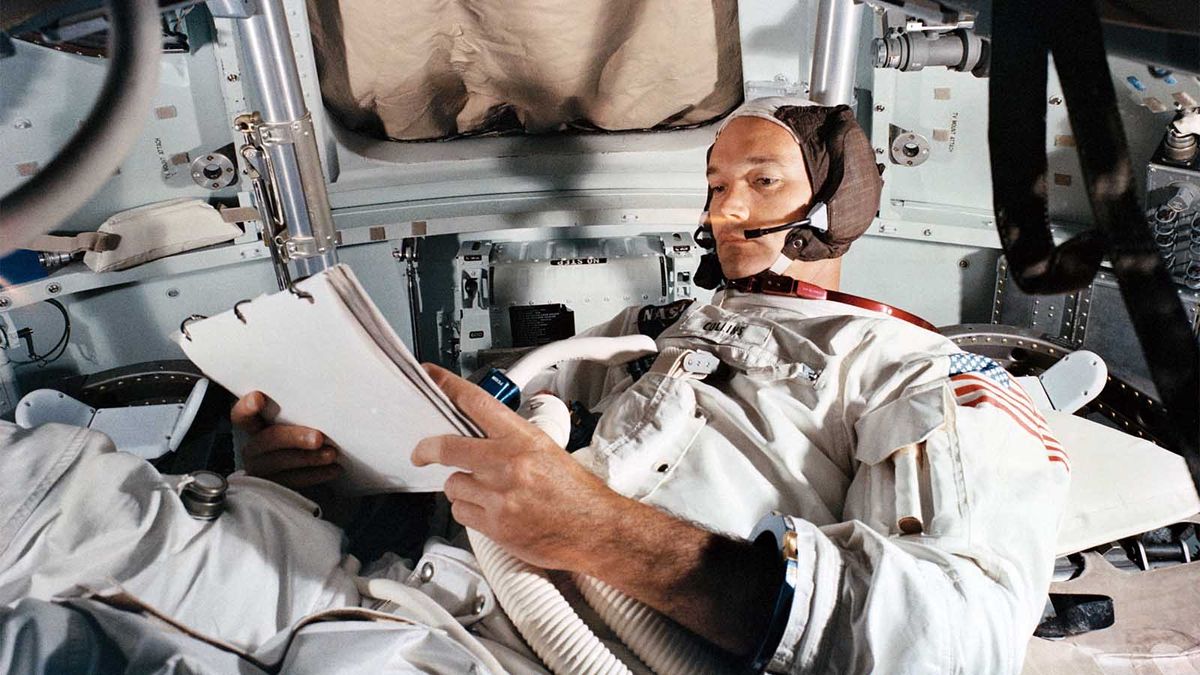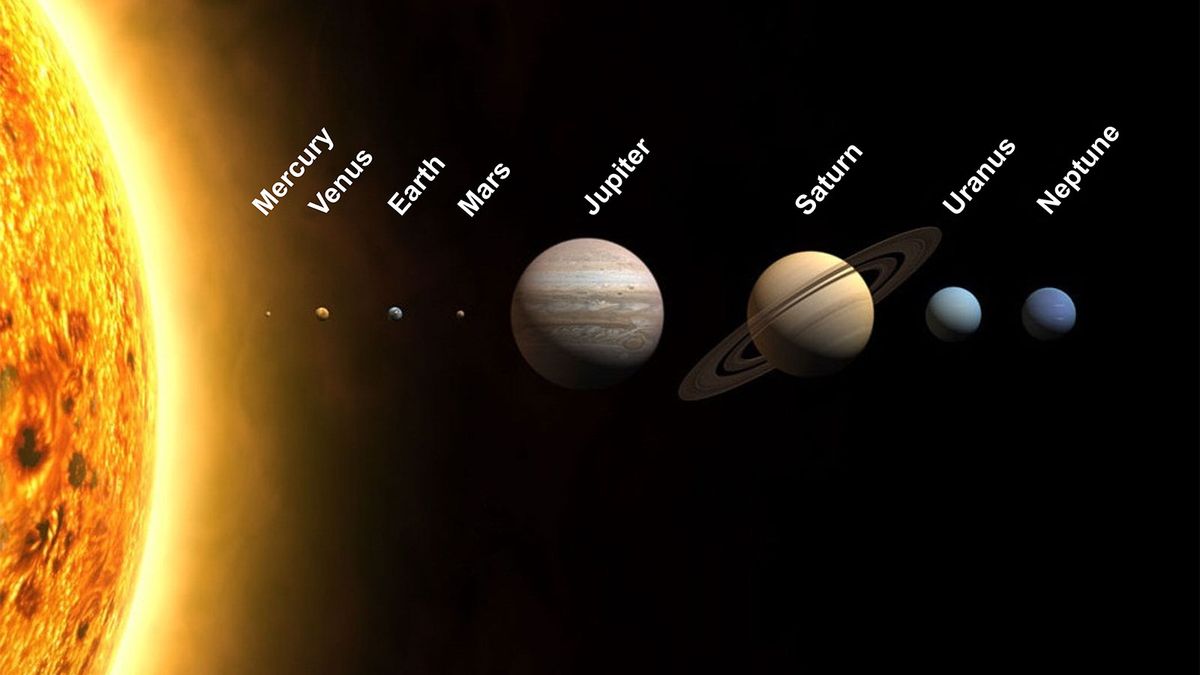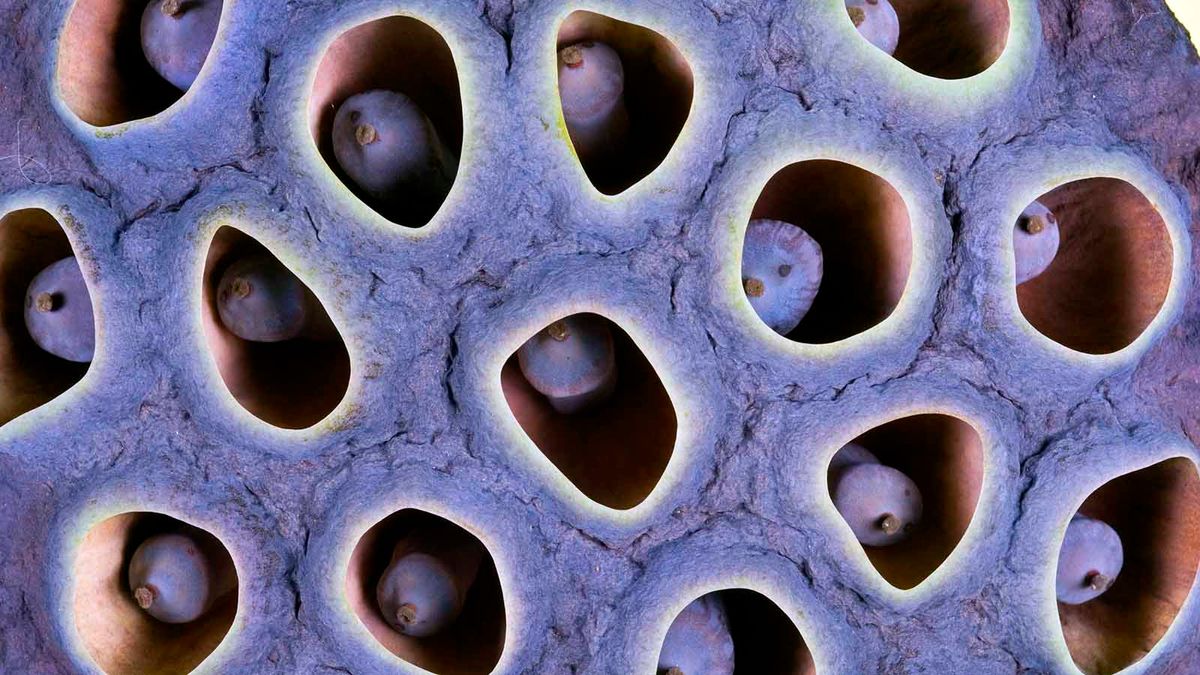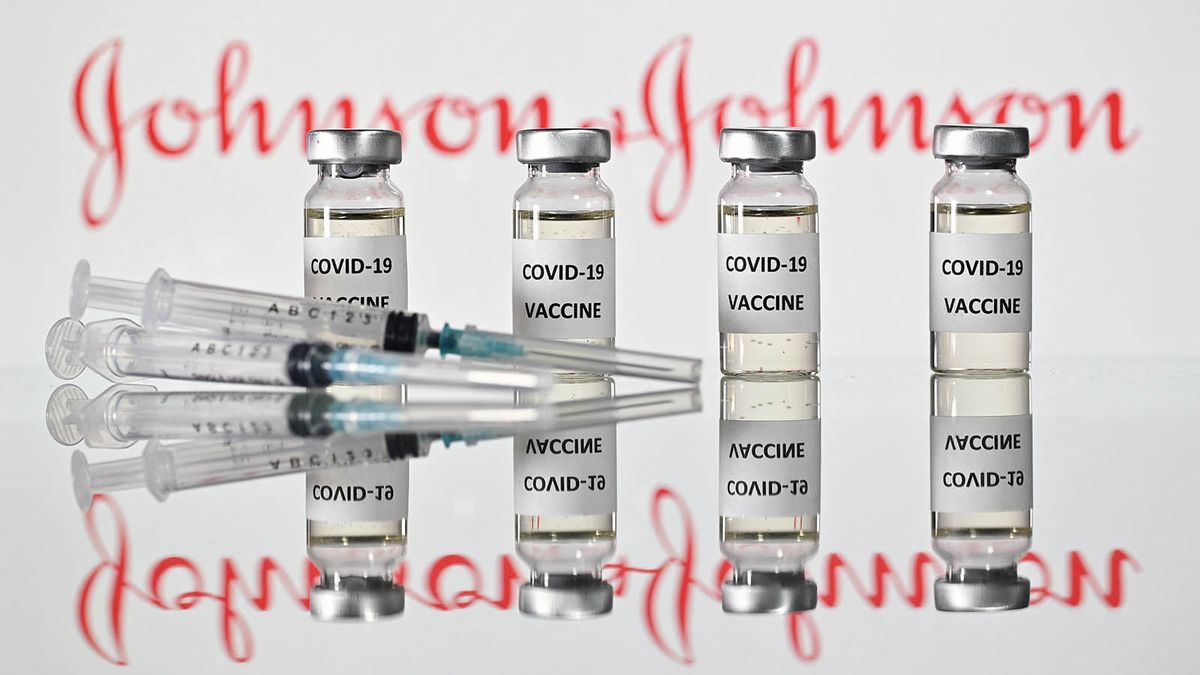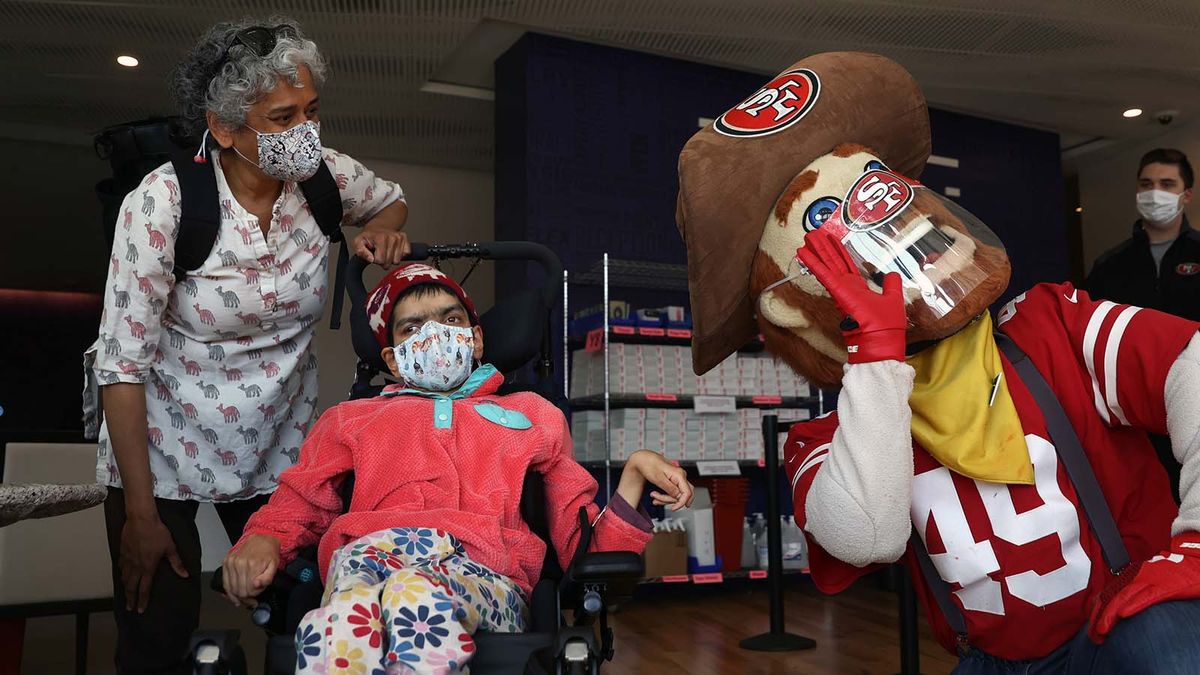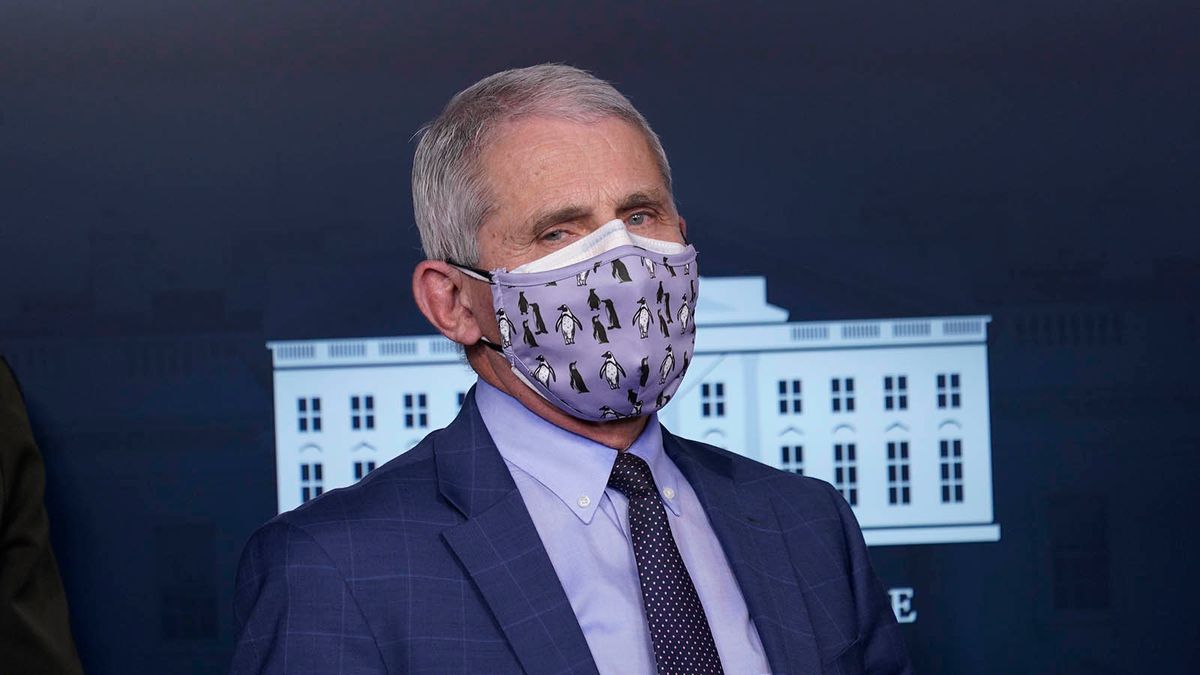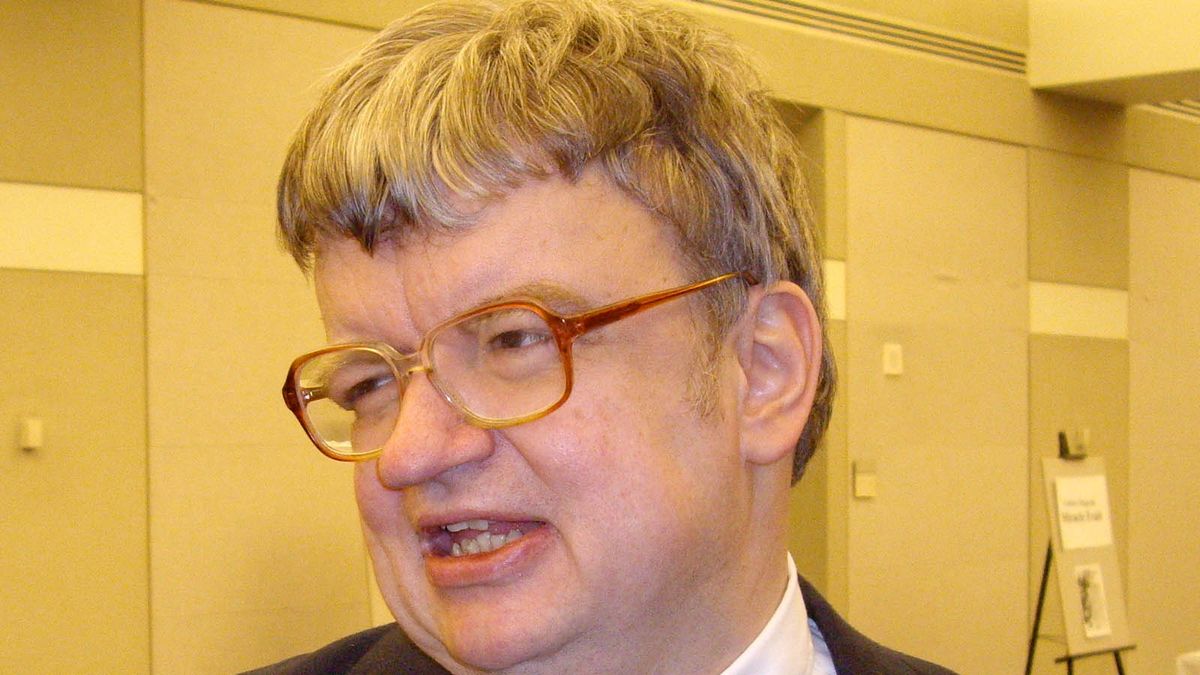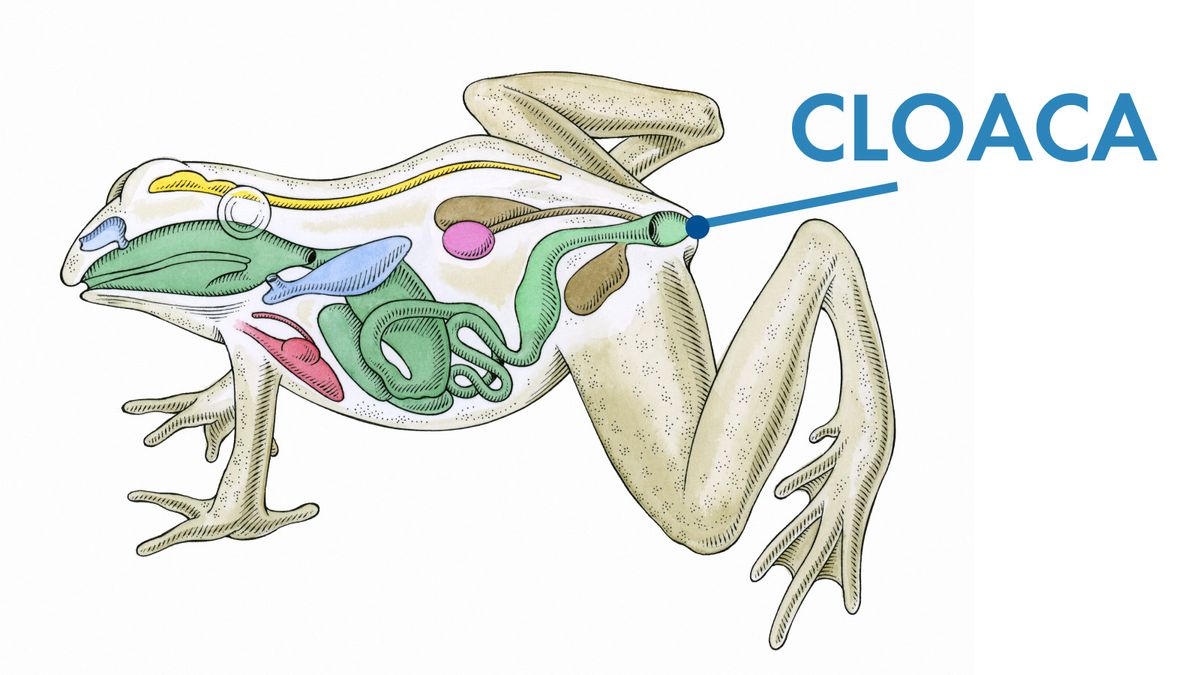
ฟอร์ด มัสแตง ปี 1974 ที่เล็กกว่าและเบากว่าอย่างเห็นได้ชัด ถือเป็นการเริ่มต้นครั้งใหม่ของรถม้าโพนี่ดั้งเดิมของอเมริกา เป็นผลิตผลของ Lee Iacocca ซึ่งเป็นบิดาของ Mustang คันแรกเมื่อสิบปีก่อน ด้วยชื่อที่เหมาะสมว่ามัสแตง II ในที่สุดรถก็ถูกมองว่าเป็นจุดต่ำสุดในประวัติศาสตร์ที่น่าภาคภูมิใจของมัสแตง แต่นั่นไม่ใช่วิธีที่มันเริ่มต้นอย่างแน่นอน
ความสำเร็จมักเกิดจากสามัญสำนึกและโชคใบ้พอๆ กับความฉลาดและการทำงานหนัก Mustang II เป็นกรณีที่ตรงประเด็น ในฐานะที่เป็นมัสแตงที่เล็กที่สุดและเบาที่สุดตั้งแต่รุ่นดั้งเดิม มันคือการเริ่มต้นใหม่สำหรับรถม้าของฟอร์ดและการกลับมาใช้เหตุผลอย่างสดชื่น และไม่ควรมีจังหวะเวลาที่ดีไปกว่านี้อีกแล้ว โดยเปิดตัวเพียงสองเดือนก่อน "วิกฤตพลังงาน" ครั้งแรกจะเขย่าอเมริกา ผู้คนจำนวนมากหลั่งไหลเข้ามาเพื่อดูมัสแตง II และเพื่อซื้อ
ยอดขายในปีแรกที่ทำสถิติสูงสุด 385,993 คัน คิดเป็น 10 เปอร์เซ็นต์จากสถิติการผลิต 12 เดือนของมัสแตงรุ่นดั้งเดิมที่ 418,812 คัน แน่นอน มัสแตง II อยู่ในการทำงานมานานก่อนที่องค์การประเทศผู้ส่งออกน้ำมัน (โอเปก) จะตัดสินใจบีบอุปทานน้ำมันของโลก การที่ฟอร์ดปรากฏตัวพร้อมกันแทบจะเป็นเรื่องบังเอิญ แม้ว่าฟอร์ดจะโชคดี
Mustang II แสดงให้เห็นว่าประวัติศาสตร์เกิดขึ้นซ้ำแล้วซ้ำอีกในโลกยานยนต์ได้อย่างไร สำหรับผู้เริ่มต้น Lee Iaccoca เพิ่งรู้ว่าตลาดพร้อมสำหรับมันในลักษณะเดียวกับที่เขาสงสัยว่ามัสแตงดั้งเดิมเป็นรถที่ใช่สำหรับเวลานั้น รถยนต์ Pony ได้รับความนิยมลดลงในปี 1970 โดยผู้ซื้อหลายรายหันมาใช้รถคอมแพคราคาประหยัดที่ประหยัดน้ำมันอย่างเช่น Maverick ของ Ford ซึ่งประสบความสำเร็จอย่างมากในปีแรก
แต่คนอเมริกันก็หันมาใช้รถสปอร์ตคูเป้นำเข้าแบบ 2+2 เช่น คาปรีอังกฤษ/เยอรมันของฟอร์ด ซึ่งได้รับคำวิจารณ์ที่ดีในเดือนเมษายน 2513 และความต้องการเริ่มต้นที่แข็งแกร่ง "การนำเข้าเชลย" อีกประการหนึ่งคือ Opel Manta ที่ผลิตในเยอรมันของ GM ซึ่งขายดี และ Toyota Celica ยังคงได้รับความนิยมมากกว่า ในปี 1965 "รถมินิโพนี่" ดังกล่าวสามารถดึงดูดยอดขายได้น้อยกว่า 100,000 คัน แต่ภายในปี 1972 มีถึง 300,000 คัน และคาดว่าจะมียอดขายมากกว่า 400,000 คันภายในปี 74 ภารกิจของ Mustang II คือการจับภาพชิ้นใหญ่ของพายใหม่ขนาดใหญ่นี้ Eugene Bordinat รองประธานฝ่ายออกแบบของ Ford ให้เครดิต Iacocca สำหรับ Mustang II อย่างเต็มที่: "[เขา] เป็นผู้ชายคนแรกที่เข้าร่วม [ที่ Ford] ที่มีความรู้สึก สำหรับรถยนต์ที่มีอยู่ในเจเนอรัลมอเตอร์สมาระยะหนึ่งแล้ว” สำหรับส่วนของเขา Iacocca ตั้งข้อสังเกต: " เมื่อฉันดูตลาดรถยนต์ต่างประเทศและเห็นว่าหนึ่งในห้าเป็นรถสปอร์ต ฉันรู้ว่ามีบางอย่างเกิดขึ้น ดูซิว่า Celica เริ่มทำอะไรก่อนที่ค่าเงินดอลลาร์ทั้งสองจะอ่อนค่าลง! ใครก็ตามที่ตัดสินใจนั่งเฉยๆ จะไม่เต้น!" แต่ฟอร์ดไม่ได้เริ่มต้นเพื่อเริ่มต้นใหม่ จริงๆ แล้วโปรแกรมมัสแตง II เริ่มต้นขึ้นประมาณกลางปี 2512 เมื่องานเริ่มต้นกับมัสแตงรุ่นต่อไปในตอนนั้น ด้วยความคลั่งไคล้ของรถมัสเซิลยังคงโหมกระหน่ำ ความคิดแรกย่อมมุ่งเน้นไปที่การออกแบบที่ใหญ่และหนักกว่าอย่างหลีกเลี่ยงไม่ได้ ซึ่งสะท้อนถึงความเชื่อของฟอร์ดที่ว่าผู้ซื้อยังคงต้องการรถโพนี่ที่กว้างขวางและ "น่าประทับใจ" ในช่วงกลางทศวรรษที่เจ็ดสิบ อันที่จริง ข้อเสนอช่วงแรกๆ มีมากกว่าเดิม ตัวใหญ่กว่ามัสแตงปี 71 เกือบเสร็จแล้ว แต่เมื่อถึงเวลาที่ Iacocca เข้ารับตำแหน่งประธานบริษัท Ford Motor ในปี 1970 ช่วงล่างหลุดออกจากตลาดรถโพนี่ และรถ Capri ที่นำเข้า ซึ่ง Iacocca กล่าวว่าเหมือนรุ่นดั้งเดิม "กว่ามัสแตงทุกคันที่เรามีในปัจจุบัน" กำลังทำธุรกิจที่มั่นคงที่ตัวแทนจำหน่ายลินคอล์น-เมอร์คิวรี Iacocca ไม่เคยชอบ Bunkie รถมัสแตงปี 71 ของ Knudsen และไม่ใช่เพียงเพราะผู้ชายที่สนับสนุนมันได้รับการสนับสนุนให้นั่งเก้าอี้ของประธานาธิบดี Iacocca มีปัญหากับเส้นทางของ Mustang มาตั้งแต่ปี 1966 เขาไม่ได้อยู่คนเดียว ตามที่นักเขียน Gary Witzenburg พูดถึง เรื่องบ่นเกิดขึ้นอย่างน้อยก็ตั้งแต่ปี 1968 ในการประชุมผู้ถือหุ้นในปีนั้น Anna Muccioli คนหนึ่งซึ่งเป็นเจ้าของ Ford Mustang ปี 65 ลุกขึ้นถาม Henry Ford II: "ทำไมคุณทิ้งรถเล็กคันเล็กไว้ไม่ได้ล่ะ?…[คุณ]คุณเป่ามันไปเรื่อยๆ แล้วสตาร์ทรถอีกคัน เป่าคันนั้นแล้วสตาร์ทอีกคัน…[W]hy don'
แต่คนอเมริกันก็หันมาใช้รถสปอร์ตคูเป้นำเข้าแบบ 2+2 เช่น คาปรีอังกฤษ/เยอรมันของฟอร์ด ซึ่งได้รับคำวิจารณ์ที่ดีในเดือนเมษายน 2513 และความต้องการเริ่มต้นที่แข็งแกร่ง "การนำเข้าเชลย" อีกประการหนึ่งคือ Opel Manta ที่ผลิตในเยอรมันของ GM ซึ่งขายดี และ Toyota Celica ยังคงได้รับความนิยมมากกว่า ในปี 1965 "รถมินิโพนี่" ดังกล่าวสามารถดึงดูดยอดขายได้น้อยกว่า 100,000 คัน แต่ภายในปี 1972 มีถึง 300,000 คัน และคาดว่าจะมียอดขายมากกว่า 400,000 คันภายในปี 74 ภารกิจของ Mustang II คือการจับภาพชิ้นใหญ่ของพายใหม่ขนาดใหญ่นี้ Eugene Bordinat รองประธานฝ่ายออกแบบของ Ford ให้เครดิต Iacocca สำหรับ Mustang II อย่างเต็มที่: "[เขา] เป็นผู้ชายคนแรกที่เข้าร่วม [ที่ Ford] ที่มีความรู้สึก สำหรับรถยนต์ที่มีอยู่ในเจเนอรัลมอเตอร์สมาระยะหนึ่งแล้ว” สำหรับส่วนของเขา Iacocca ตั้งข้อสังเกต: " เมื่อฉันดูตลาดรถยนต์ต่างประเทศและเห็นว่าหนึ่งในห้าเป็นรถสปอร์ต ฉันรู้ว่ามีบางอย่างเกิดขึ้น ดูซิว่า Celica เริ่มทำอะไรก่อนที่ค่าเงินดอลลาร์ทั้งสองจะอ่อนค่าลง! ใครก็ตามที่ตัดสินใจนั่งเฉยๆ จะไม่เต้น!" แต่ฟอร์ดไม่ได้เริ่มต้นเพื่อเริ่มต้นใหม่ จริงๆ แล้วโปรแกรมมัสแตง II เริ่มต้นขึ้นประมาณกลางปี 2512 เมื่องานเริ่มต้นกับมัสแตงรุ่นต่อไปในตอนนั้น ด้วยความคลั่งไคล้ของรถมัสเซิลยังคงโหมกระหน่ำ ความคิดแรกย่อมมุ่งเน้นไปที่การออกแบบที่ใหญ่และหนักกว่าอย่างหลีกเลี่ยงไม่ได้ ซึ่งสะท้อนถึงความเชื่อของฟอร์ดที่ว่าผู้ซื้อยังคงต้องการรถโพนี่ที่กว้างขวางและ "น่าประทับใจ" ในช่วงกลางทศวรรษที่เจ็ดสิบ อันที่จริง ข้อเสนอช่วงแรกๆ มีมากกว่าเดิม ตัวใหญ่กว่ามัสแตงปี 71 เกือบเสร็จแล้ว แต่เมื่อถึงเวลาที่ Iacocca เข้ารับตำแหน่งประธานบริษัท Ford Motor ในปี 1970 ช่วงล่างหลุดออกจากตลาดรถโพนี่ และรถ Capri ที่นำเข้า ซึ่ง Iacocca กล่าวว่าเหมือนรุ่นดั้งเดิม "กว่ามัสแตงทุกคันที่เรามีในปัจจุบัน" กำลังทำธุรกิจที่มั่นคงที่ตัวแทนจำหน่ายลินคอล์น-เมอร์คิวรี Iacocca ไม่เคยชอบ Bunkie รถมัสแตงปี 71 ของ Knudsen และไม่ใช่เพียงเพราะผู้ชายที่สนับสนุนมันได้รับการสนับสนุนให้นั่งเก้าอี้ของประธานาธิบดี Iacocca มีปัญหากับเส้นทางของ Mustang มาตั้งแต่ปี 1966 เขาไม่ได้อยู่คนเดียว ตามที่นักเขียน Gary Witzenburg พูดถึง เรื่องบ่นเกิดขึ้นอย่างน้อยก็ตั้งแต่ปี 1968 ในการประชุมผู้ถือหุ้นในปีนั้น Anna Muccioli คนหนึ่งซึ่งเป็นเจ้าของ Ford Mustang ปี 65 ลุกขึ้นถาม Henry Ford II: "ทำไมคุณทิ้งรถเล็กคันเล็กไว้ไม่ได้ล่ะ?…[คุณ]คุณเป่ามันไปเรื่อยๆ แล้วสตาร์ทรถอีกคัน เป่าคันนั้นแล้วสตาร์ทอีกคัน…[W]hy don'

เพื่อความประหลาดใจของเธอ ประธานกล่าวว่าเขาเห็นด้วย "หวังว่าเราจะจำสิ่งที่คุณพูดไว้ที่นี่ และหวังว่าเราจะมีผลิตภัณฑ์ที่น่าพอใจสำหรับคุณ"
ในอดีต Iacocca ได้จัดการแข่งขันการออกแบบภายในองค์กรเพื่อพัฒนามัสแตงรุ่นต่อไป ดูรายละเอียดในหน้าถัดไป
สำหรับข้อมูลเพิ่มเติมเกี่ยวกับ Ford Mustang โปรดดูที่ลิงก์ต่อไปนี้
- เตรียมตัวให้พร้อมสำหรับเรื่องราวทั้งหมดของรถสปอร์ตที่คนรักรถที่สุดของอเมริกา วิธีการทำงานของ Ford Mustang ที่บันทึกเรื่องราวในตำนานตั้งแต่เริ่มก่อตั้งในช่วงต้นทศวรรษ 1960 จนถึง Ford Mustang รุ่นใหม่ในปัจจุบัน
- มัสแตงที่ใหญ่กว่าและแข็งแรงกว่าควบม้าเข้ามาในปี 1971 เช่นเดียวกับที่ผู้ซื้อย้ายออกจากตลาดรถโพนี่ ในปี พ.ศ. 2514-2515-2516 Ford Mustang เรียนรู้ว่ารถยังคงนำเสนอสไตล์ไฮเทคได้อย่างไร
- มัสแตงเริ่มการปฏิวัติครั้งที่สองด้วย "สายพันธุ์ใหม่" ที่หล่อเหลาและซับซ้อน พ.ศ. 2522-2523-2524 ฟอร์ด มัสแตงเล่าถึงความสำเร็จในโชว์รูมและในใจแฟนๆ
- สำหรับรายงานฉบับสมบูรณ์เกี่ยวกับ Ford Mustang 2007 โปรดดูที่ Consumer Guide New Car Reviews คุณจะพบผลการทดสอบบนท้องถนน ภาพถ่าย ข้อกำหนด และราคาสำหรับรถยนต์ รถบรรทุก มินิแวน และ SUV หลายร้อยรายการ
เพิ่มเติมเกี่ยวกับมัสแตง
สำหรับข้อมูลจำเพาะและข้อมูลเจ๋งๆ อื่นๆ ของมัสแตงในวันนี้และหลายปีก่อน โปรดดูที่:
- คำพูดและรูปภาพบอกเล่าเพียงส่วนหนึ่งของเรื่องราวของมัสแตงเท่านั้น สำหรับขนาดรถยนต์ ข้อมูลเครื่องยนต์ ยอดขายประจำปี ราคา และข้อมูลอื่นๆ โปรดดูข้อมูลจำเพาะของ Ford Mustang ปี 1974-1978
- Ford Mustang Boss 351 รุ่นปี 1971เป็นรถมัสแตงสมรรถนะสูงรุ่นสุดท้ายของ Ford ในยุครถมัสเซิลคลาสสิก นี่คือโปรไฟล์ ภาพถ่าย และข้อมูลจำเพาะ
- Ford Mustang Mach 1 428 Cobra Jet ปี 1969เป็นรถมัสเซิลคาร์ที่แฟน ๆ ของมัสแตงรอคอย ควบรวมเข้ากับโปรไฟล์ รูปภาพ และข้อมูลจำเพาะ
- Ford Mustang ปี 1974: การแข่งขันการออกแบบ
- ฟอร์ด มัสแตง ปี 1974: The Winning Design
- Ford Mustang ปี 1974: Notchback by Default
- ฟอร์ด มัสแตง ปี 1974
- เครื่องยนต์และตัวเลือกของ Ford Mustang ปี 1974
- ฟอร์ด มัสแตง ปี 1975
- ฟอร์ด มัสแตง ปี 1976
- Ford Mustang ปี 1977 และ 1978
Ford Mustang ปี 1974: การแข่งขันการออกแบบ

In November 1969, less than two months after Henry Ford II fired Bunkie Knudsen as Ford president, new chief Lee Iacocca voiced his own concerns to a group of top-level Ford executives at the toney Greenbrier Resort in West Virginia.
According to author Gary Witzenburg, this meeting quickly led to "top-priority plans to build a new sporty small car for the 1974 model year based on…the Maverick shell. A second program, codenamed 'Arizona,' was to investigate an upmarket variation on the upcoming '71 Pinto subcompact for 1975."
Both programs were turned over to Nat Adamson, manager of advanced product planning, who recalled that the Maverick-based car, code named "Ohio," was initially favored. "[The Maverick] then seemed like a very small car to us," he told Witzenburg, "especially when we compared it to that year's much bigger and longer Mustang. And the Maverick was selling very well at the time."
But the smaller Arizona got priority when three concept models "tested" well against contemporary sports cars in two Southern California consumer showings. It was the first sign the public might go for something even smaller than the original Mustang.

But neither of these programs produced anything that satisfied Iacocca, design vice president Eugene Bordinat, or Advanced Design chief Don DeLaRossa. Ohio proposals ended up blowsy and staid, while initial Arizona designs looked like the restyled Pintos they were.
An Assist From Ghia
But then, in November 1970, Ford acquired a controlling interest in Ghia of Italy, and Iacocca wasted no time in asking the famed coachbuilder to submit concepts for his new small sporty car. With typical dispatch, Ghia sent over a running prototype in just 53 days, a sloped-nose red-and-black fastback that Iacocca himself drove to and from work.
มันเร่งการขับเคลื่อนไปสู่มัสแตง II ในที่สุด Iacocca กล่าวในภายหลังว่า "นอกเหนือจากรูปแบบใหม่ของการจัดแต่งทรงผมที่เรานำเสนอ" Iacocca กล่าวในภายหลัง "การส่งมอบตัวอย่างที่แท้จริง มีชีวิต และขับเคลื่อนได้นั้นรวดเร็ว...รวมความคิดของเราและให้สิ่งที่จับต้องได้ให้เราดูและโต้เถียงกันในช่วงต้นปี เกม ประสบการณ์ที่ผมไม่เคยมีมาก่อนในอาชีพการงานในบริษัท.... มันเป็นการกระตุ้นให้เกิดการพัฒนาอย่างมากในช่วงเริ่มต้นของโปรแกรมทั้งหมด"
หลายเดือนต่อมา Ghia ได้นำเสนอรถต้นแบบรุ่นที่สอง ร่องบากด้านหลังที่มี "เจดีย์" ที่โปร่งสบายสำหรับ Mercedes SL และการแกะสลักด้านข้างตัวรถเหมือนกับของมัสแตงคันแรก สิ่งนี้จะช่วยกระตุ้นการคิดเชิงออกแบบของเดียร์บอร์นได้เช่นกัน
เลี้ยงแอริโซนา
ประมาณเดือนกรกฎาคม พ.ศ. 2514 ฝ่ายบริหารตัดสินใจที่จะละทิ้งรถยนต์โอไฮโอและเลื่อนตำแหน่งแอริโซนาที่ชื่นชอบของอดัมสันไปเป็นปี พ.ศ. 2517 สิ่งเหล่านี้เป็นการตัดสินใจที่สำคัญ เพราะพวกเขาตัดขาดอย่างมีประสิทธิภาพโดยใช้เครื่องยนต์หกสูบอินไลน์ที่ใช้งานได้ยาวนานของฟอร์ด
Bordinat เล่าว่า DeLaRossa "ทำให้สตูดิโอของเขาทำงานบนแบบจำลองดินเหนียวที่แสดงให้เห็นว่า Mustang จะต้องใหญ่แค่ไหนเพื่อรองรับเครื่องยนต์ I-6 ขนาดใหญ่นั้น เขาให้ฉันโทรหา Lee เพื่อดูมัน ดอนกลายเป็นเรา พูดอย่างตรงไปตรงมาและบอกลีว่าถ้าเราต้องการสร้างรถขนาดเล็กลงจริงๆ เราควรเริ่มด้วยเครื่องยนต์ที่เล็กกว่าเพราะว่ารถคันนี้ที่มีเครื่องยนต์นี้ในนั้นใหญ่ขึ้นกว่าเดิมก่อนที่จะได้รับการออกแบบ Lee เห็นด้วยกับเราและนั่นก็คือ จุดสิ้นสุดของ I-6 สิ่งต่อไปที่เราได้ยินก็คือการเลือกเครื่องยนต์จะเป็นเครื่องยนต์สี่สูบขนาดเล็ก 2.3 ลิตรใหม่และรุ่น German Capri V-6 ที่มีปริมาตรกระบอกสูบใหญ่ขึ้น ดังนั้นเราจึงสามารถ เพื่อทำให้ส่วนที่เหลือของรถเล็กลงด้วย”
ถึงกระนั้น ยังไม่มีความเห็นเป็นเอกฉันท์ว่ามัสแตงรุ่นใหม่ควรจะมีขนาดเล็กเพียงใด แม้ว่าจะต้องลดขนาดลงจากปี 1971-73 อย่างเห็นได้ชัด นอกจากนี้ยังมีการโต้เถียงกันว่าจะเสนอรอยบากแบ็ค แบ็คแบ็ค หรือทั้งสองอย่างผสมผสานกัน

ในอีกรูปแบบหนึ่งของโครงการ Mustang ดั้งเดิม Iacocca ได้จัดการแข่งขันการออกแบบภายในเพื่อให้สิ่งต่าง ๆ ดำเนินไปอย่างต่อเนื่อง “ลีคิดว่าการเอาอกเอาใจพวกเขาเป็นสิ่งที่ดีที่สุด” บอร์ดินาทบอกกับวิทเซนเบิร์ก “ฉันพยายามไม่เห็นด้วยกับเขา แต่ทุกครั้งที่เราทำ เราก็ได้รถที่ดีเป็นพิเศษ”
การแข่งขันนี้เริ่มขึ้นในเดือนสิงหาคม พ.ศ. 2514 และในที่สุดก็กินเวลาถึงสามเดือน โดยได้แข่งขันกันระหว่างสตูดิโอผลิตฟอร์ดและลินคอล์น-เมอร์คิวรี กับกลุ่มการออกแบบขั้นสูงของ DeLaRossa และสตูดิโอภายในภายใต้การนำของแอล. เดวิด แอช พูดถึง "กลับไปสู่อนาคต" แม้แต่ผู้เล่นหลักหลายคนก็เหมือนกับเมื่อ 10 ปีก่อน
การแข่งขันการออกแบบครั้งนี้ร้อนแรงเหมือนครั้งแรก ค้นหาสิ่งที่ชนะในหน้าถัดไป
สำหรับข้อมูลเพิ่มเติมเกี่ยวกับ Ford Mustang โปรดดูที่ลิงก์ต่อไปนี้
- เตรียมตัวให้พร้อมสำหรับเรื่องราวทั้งหมดของรถสปอร์ตที่คนรักรถที่สุดของอเมริกา วิธีการทำงานของFord Mustangที่บันทึกเรื่องราวในตำนานตั้งแต่เริ่มก่อตั้งในช่วงต้นทศวรรษ 1960 จนถึง Ford Mustang รุ่นใหม่ในปัจจุบัน
- มัสแตงที่ใหญ่กว่าและแข็งแรงกว่าควบม้าเข้ามาในปี 1971 เช่นเดียวกับที่ผู้ซื้อย้ายออกจากตลาดรถโพนี่ ในปี พ.ศ. 2514-2515-2516 Ford Mustang เรียนรู้ว่ารถยังคงนำเสนอสไตล์ไฮเทคได้อย่างไร
- มัสแตงเริ่มการปฏิวัติครั้งที่สองด้วย "สายพันธุ์ใหม่" ที่หล่อเหลาและซับซ้อน พ.ศ. 2522-2523-2524 ฟอร์ด มัสแตงเล่าถึงความสำเร็จในโชว์รูมและในใจแฟนๆ
- Ford Mustang เป็นศูนย์กลางของความคลั่งไคล้รถกล้ามเนื้อของอเมริกา เรียนรู้เกี่ยวกับรถมัสแตงที่เร็วที่สุดบางรุ่น พร้อมด้วยโปรไฟล์ ภาพถ่าย และข้อมูลจำเพาะของรถมัสเซิลมากกว่า 100 คัน
ฟอร์ด มัสแตง ปี 1974: The Winning Design

Lee Iacocca ประธานบริษัท Ford ต้องการหวนรำลึกถึงบรรยากาศของ Ford Mustang คันแรกสำหรับ Mustang II ได้ก่อตั้งการแข่งขันด้านการออกแบบภายในบริษัทที่ผลิตโมเดล '65 ขึ้นมาใหม่
เป็นอีกครั้งที่ทีมคู่แข่งใช้แนวคิดที่ Iacocca กำหนดไว้อย่างชัดเจนว่า "มัสแตงรุ่นใหม่ต้องมีขนาดเล็ก โดยมีระยะฐานล้อระหว่าง 96 ถึง 100 นิ้ว ต้องเป็นรถแบบบากแบ็คแบบสปอร์ตและ/หรือแบบเร็ว รถเปิดประทุนนั้นตายแล้วและสามารถ ถูกลืม [ทีหลังไปคิดอย่างอื่นที่ไครสเลอร์] มันต้องมาเป็นอุปกรณ์มาตรฐานด้วยเกียร์ธรรมดา 4 สปีด และเครื่องยนต์ 4 สูบหรือ 6 สูบเล็ก ที่สำคัญต้องหรูหรา-หุ้มด้วยวัสดุคุณภาพ และสร้างอย่างระมัดระวัง" จนถึงจุดหนึ่ง Iacocca ประกาศว่า "1974 Mustang จะต้อง… อัญมณีเล็ก ๆ น้อย ๆ"
ตามที่ Ben Bidwell หัวหน้าโปรแกรมวางแผนผลิตภัณฑ์ (เขาเป็นผู้จัดการทั่วไปของแผนก Ford Division ในปี 1973 และต่อมาเป็นประธาน Chrysler ภายใต้ Iacocca) ประธานของ Ford จะต้องมีคุณภาพสูง: "เขาจะออกไปที่นั่นในโชว์รูมและเขาจะ ใช้นิ้วชี้ไปรอบๆ แม่พิมพ์ และถ้ามันมากเท่ากับขูดเขา ลูกปืนที่น่าสงสารจะได้มันมา"
แน่นอนว่า Iacocca เองก็สนใจการออกแบบของ Mustang II ด้วยเช่นกัน Hal Sperlich หัวหน้าฝ่ายวางแผนองค์กรเล่าว่า: "เขากำลังวางแผนรถยนต์ในประเทศรูปแบบใหม่ทั้งหมดสำหรับลูกค้าประเภทอื่น ดังนั้นโดยธรรมชาติแล้วเขาต้องการให้มันดูแตกต่างจากรถคันอื่นๆ ในตลาด ซึ่งแตกต่างจาก Mustangs ในปี 1971, 1972 และปี 1973 ซึ่งแตกต่างจาก Pinto และแตกต่างจาก Capri ด้วย”
ทั้งหมดนี้มาจากการทบทวนการจัดการเมื่อปลายเดือนพฤศจิกายนของแบบจำลองดินเหนียวขนาดเต็มห้ารุ่น รอยบากหนึ่งอันและแบบเร็วสี่แบบ ผู้ชนะที่ง่ายคือ fastback จากกลุ่ม Lincoln-Mercury ภายใต้ Al Mueller เช่นเดียวกับโจ โอรอสก่อนหน้าเขา เขาทาสีดินเหนียวด้วยลูกพลับที่สะดุดตา ไม่ใช่สีขาว ดังนั้นมันจึงโดดเด่นและปรับปรุงโอกาสของทีมของเขา
ตามที่ Mueller เล่าถึงผู้เขียน Gary Witzenburg: "ขั้นตอนของ Mr. Iacocca ในการแสดงเหล่านี้มักจะเหมือนกัน เขาเดินไปรอบ ๆ รถสองสามครั้งและฟังความคิดเห็นของผู้อื่น จากนั้นเขาก็พูดในสิ่งที่เขาคิด - ทั้งข้อดีและข้อเสีย เขาพลิกกลับอย่างรวดเร็วของเรา ซิการ์ของเขาต้องหมุนไปสามรอบ"

แม้ว่าการผลิตจะมีการเปลี่ยนแปลงเล็กน้อยอย่างน่าประหลาดใจ แต่การออกแบบได้รับการวิจารณ์จากสื่อผสม และนักวิจารณ์บางคนรู้สึกว่ารอยบากที่ได้มาจากมันเป็นการผสมผสาน Fastback ถือว่าหล่อกว่า แม้ว่าจะไม่ใช่รูปทรง "คลาสสิก" เหมือนกับ Mustang '65 อย่างไรก็ตาม มันใช้งานได้จริงมากกว่าด้วยการใช้ "ประตู" ยกหลังแบบยุโรป ซึ่งเป็นรุ่นแรกสำหรับมัสแตง และอีกรุ่นหนึ่งสำหรับความนิยมของรูปแบบตัวถังแฮทช์แบ็คในอเมริกา
ห้องโดยสารชั้นหนึ่ง
การออกแบบตกแต่งภายในเป็นที่ถกเถียงกันน้อยกว่าแม้ว่าจะมีส่วนร่วมไม่น้อย Dave Ash หัวหน้าสตูดิโอละทิ้งการออกแบบตามปกติ ตัดสินใจทำให้ "เจ้าชู้ที่นั่ง" ของเขาดูสมจริงอย่างผิดปกติเพื่อถ่ายทอดความรู้สึกของการอยู่ในรถยนต์จริง เขายังติดแผ่นโลหะภายนอกและล้อสี่ล้อ
"การสร้างเป็นสิ่งที่ต้องใช้เวลามาก" เขากล่าวในภายหลัง "แต่มันก็ตอบสนองวัตถุประสงค์ได้เป็นอย่างดี เราไม่ต้องผ่านการประชุมที่ซับซ้อนเพื่อตัดสินทุกอย่าง ทุกอย่างได้รับการอนุมัติที่นี่ เรา อยู่บนพื้นฐานความผิดพลาดเพื่อทำให้มันเสร็จ และได้รับการตอบรับอย่างกระตือรือร้นมาก"
Ash สารภาพในภายหลังว่าทีมของเขาได้รับแรงบันดาลใจจาก Jaguar, Rolls-Royce และ Mercedes บางส่วน "เราใส่ทุกอย่างลงในสิ่งที่เราคิดได้ซึ่งหมายถึงความสง่างามที่ถูกจำกัด บวกกับการลุกขึ้นและเดินทางที่บอกว่ามัสแตง -- สิ่งที่ช่วยดับไฟ.... มันคือ T-Bird ขนาดเล็ก"

ต่างจากแผงหน้าปัดแบบครอบคู่ขนาดใหญ่ที่แกะสลักอย่างหนักในปี 1969-73 แผงหน้าปัด Mustang II ถูกครอบงำด้วยรูปสี่เหลี่ยมผืนผ้าขนาดใหญ่ที่เรียบง่ายตรงหน้าคนขับ สิ่งนี้ทำให้การควบคุมทั้งหมดอยู่ใกล้แค่เอื้อม แต่ยังคงมีที่ว่างสำหรับไฟเตือนและอุปกรณ์ที่จำเป็นทั้งหมด น่าแปลกที่รุ่นหลังมีมาตรวัดความเร็วรอบ เกจวัดอุณหภูมิ และแอมมิเตอร์แบบมาตรฐาน
ตอนแรกเบาะนั่งหุ้มด้วยผ้าพลีท ไวนิล หรือหนังเสริม ซึ่งดูหรูหราเป็นพิเศษสำหรับรถยนต์ขนาดเล็ก พวกเขาไม่มีการปรับคราดซึ่งอ้างว่าเป็นจุดเจ็บที่แท้จริงโดยผู้ทดสอบถนนบางคน แต่สะดวกสบายกว่าเบาะนั่งมัสแตงรุ่นก่อนอย่างแน่นอน
Rear legroom was limited, but the new car was seen as being used primarily by one or two adults who would sit in the front. Back-seat room would be sufficient only for a couple of small children or for an adult passenger to be comfortable for a short time. Another echo of Ford's first pony car.
The winning design was a fastback, but two body styles would be offered. On the next page, learn how a notchback also found its way into the 1974 Mustang lineup.
For even more on the Ford Mustang, check out the following links.
- Saddle up for the complete story of America's best-loved sporty car. How the Ford Mustang Works chronicles the legend from its inception in the early 1960s to today's all-new Mustang.
- A bigger, brawnier Mustang galloped in for 1971, just as buyers were moving away from the pony car market. In 1971-1972-1973 Ford Mustang, learn how the car still offered high style.
- Mustang began a second revolution with the handsome, sophisticated "New Breed". 1979-1980-1981 Ford Mustang tells how hit scored big in the showroom, and in fans' hearts.
- Ford muscle cars were among the top performers of the muscle car era. Check out profiles, photos, and specifications of some tough Ford muscle cars.
The 1974 Ford Mustang: Notchback by Default

How the notchback version of the 1974 Ford Mustang came into being is in fact an interesting lesson in corporate decision-making, and in the challenges facing those who have to execute those decisions.
The notchback concept shown at a November 1971 executive review of design concepts, submitted by Advanced Design chief Don DeLaRossa's troops, had been nicknamed "Anaheim" after it bombed at a September consumer clinic in Disneyland's hometown.
But Iacocca, suspecting researchers had missed something, decided to give it one last chance at a San Francisco session in February 1972. Reaction was positive, so it was decided to do a "trunked" version of the approved fastback -- this with barely 16 months left before production was scheduled to start. "It seems we go through that with every Mustang program," said Jack Telnack, who later replaced Eugene Bordinat as company design chief. "We always start with the fastback.... Then we find out the surveys still say fifty-fifty [preference] and we have to add the notchback."

DeLaRossa long maintained the Anaheim should have been chosen as the theme model. As he later told author Gary Witzenburg: "[If] we wanted to design a modern second generation of Mustangs, why not recapture some of the flavor of the famous original model of 1965? That was a notchback. The fastback Mustangs were offshoots that came in later." He could have added that the notchback had always outsold the fastback, something that may have occurred to Iacocca too.
In any case, Iacocca certainly knew the sales necessity of having two body types, and he'd liked the Anaheim from the first, though maybe not as much as the Mueller fastback. Interestingly, Ford also investigated a cut-down two-seat fastback in February '72, but it was never seriously in the running.
DeLaRossa recalled that, "When we started the Mustang II, I said to Lee Iacocca that we should not forget the original Mustang was a notchback -- that was followed with a fastback -- so let's not do a fastback first. Let's do the notchback first. My recollection is that that made sense to him. So I got to work on a notchback right away at Ghia, and a version of it in Dearborn.

"When Lee saw the Anaheim," DeLaRossa continued, "he said to me, 'It's terrific, but it doesn't have enough 'Mustang' in it. It's almost like it's too modern, too much of a departure.' And much to my chagrin, there was a young designer, Fritz Mayhew, who embarks on doing a fastback.
"It was very attractive. And damned if Lee didn't buy it. A 180 degrees from what we had talked about. So then all hell broke loose trying to make a notchback out of that car. There was no way, and that accounts for the strange look of the Mustang II notchback. It never looked right. The C-pillar looked like a tree trunk growing out of the quarter panel.
"The Mustang II was a mild success and just hung around," DeLaRossa concluded. "I had trouble adjusting to that. I think the car I did would have been gangbusters, but that's life in the creative business."
When it hit showrooms, the 1974 Mustang was noticeably smaller than its predecessor. Get the numbers on the next page.
For even more on the Ford Mustang, check out the following links.
- Saddle up for the complete story of America's best-loved sporty car. How the Ford Mustang Works chronicles the legend from its inception in the early 1960s to today's all-new Mustang.
- A bigger, brawnier Mustang galloped in for 1971, just as buyers were moving away from the pony car market. In 1971-1972-1973 Ford Mustang, learn how the car still offered high style.
- Mustang began a second revolution with the handsome, sophisticated "New Breed". 1979-1980-1981 Ford Mustang tells how hit scored big in the showroom, and in fans' hearts.
- For a full report on the 2007 Ford Mustang, check out Consumer Guide New Car Reviews. Here you'll find road test results, photos, specifications, and prices for hundreds of cars, trucks, minivans, and SUVs.
The 1974 Ford Mustang

Though it retained the signature long-hood/short-deck proportions, Mustang II was visibly smaller than the original. The real target was sporty import coupes. Against the '65 it was nearly six inches shorter in wheelbase (at 94.2 inches), 6.6 inches shorter overall (at 175.0), two inches slimmer (68.2), and 1.1 inches lower (49.9).
There were dramatic differences against the bulky 1971-73 models, the II being some 20 inches shorter overall, nearly 13 inches trimmer between wheel centers, four inches narrower, an inch lower, and -- the important part -- lighter by a whopping 400-500 pounds. The increasingly popular Toyota Celica had a 1.3-inch longer wheelbase than Mustang II but was 11.1 inches shorter, 5.2 inches slimmer, and 2.5 inches taller.
To prepare the public for Mustang II, Ford ran up a lightly disguised concept version as a 1973 auto-show attraction. Called Sportiva II, it was essentially the production car recast as a "targa" convertible, with a fixed rollover bar between removable roof sections. It would have been a great showroom lure, but the ragtop market had collapsed and Iacocca had ruled out a new open Mustang -- another break with the past.

This left a base-trim notchback and fastback, a sportier Mach 1 fastback, and a vinyl-topped Ghia coupe, replacing Grande as the luxury model. All were fixed-pillar styles, not pillarless designs. Fastbacks offered flip-out rear-quarter windows as a $29 option.
Not Just a Sporty Pinto
At announcement time, some observers suggested Mustang II was just a sportier Pinto. Of course, that was how it started. And sure enough, a good many components were shared. Even wheelbase was the same.
But the Pinto was actually upgraded for '74 to take advantage of components and features designed for Mustang II. For example, both models employed unit construction -- another first for the pony car -- and shared a basic coil-spring front suspension with unequal-length upper and lower arms.
For the Mustang, however, the lower arms as well as the drivetrain were cradled by a U-shaped rubber-mounted subframe; the Pinto's front suspension bolted directly to the main structure. The subframe, a brainstorm from program engineers Bob Negstad and Jim Kennedy, greatly reduced road shock and driveline vibration reaching the cabin. It also contributed to more precise steering and a smoother ride versus the Pinto.
Stingy company accountants approved the added expense in light of the Mustang's planned higher selling price. Witzenburg notes the "toilet seat" (as the subframe was known internally) "came to be regarded as the single most important component of the Mustang II chassis."

There were other differences, too. For example, Mustang II shared the Pinto's rack-and-pinion steering but mounted it differently, again to minimize shock, and offered optional power assist (which Pinto did not at the time). At the rear, Mustang leaf springs were two inches longer than Pinto's, and shock absorbers were staggered as in previous high-performance Mustangs.
Spring rates were computer-calculated to match each particular car's equipment and weight. The Ghia notchback, for example, came with very soft settings, while the optional competition suspension had the stiffest springs, along with a thicker front antiroll bar, a rear bar, and Gabriel adjustable shock absorbers.
The 1974 Mustang was available with V-6 or four-cylinder power. Find out what other options were available on the next page.
For even more on the Ford Mustang, check out the following links.
- Saddle up for the complete story of America's best-loved sporty car. How the Ford Mustang Works chronicles the legend from its inception in the early 1960s to today's all-new Mustang.
- A bigger, brawnier Mustang galloped in for 1971, just as buyers were moving away from the pony car market. In 1971-1972-1973 Ford Mustang, learn how the car still offered high style.
- Mustang began a second revolution with the handsome, sophisticated "New Breed". 1979-1980-1981 Ford Mustang tells how hit scored big in the showroom, and in fans' hearts.
- The Ford Mustang is central to America's muscle car mania. Learn about some of the quickest Mustangs ever, along with profiles, photos, and specifications of more than 100 muscle cars.
1974 Ford Mustang Engines and Options

Ford President Lee Iacocca masterminded the Mustang II, creating a smaller, more fuel-efficient car to compete with sporty imports. Iacocca had eliminated the straight-line six-cylinder engine in favor of a more compact V-6, and per his edict, engineers gave no thought to providing a V-8 engine, a break with Mustang tradition -- and something Ford would soon regret.
Initial engine choices comprised a new 2.3-liter (140-cubic-inch) single-overhead-cam inline four-cylinder and a 2.8-liter enlargement of the Capri's overhead-valve V-6. The four, sometimes called the "Lima" engine after the Lima, Ohio, plant that supplied it, was the first American-built engine designed to metric dimensions. That wasn't surprising. Originally slated for some of Ford's larger European cars, it was actually a bored-and-stroked version of the Pinto 2.0-liter.
A novel feature was "monolithic engine timing." After each engine was assembled, an electronic device hooked to a computer was connected to two engine sensors, an indicator point at the rear of the crankshaft and an electrical terminal between the distributor and coil. The computer compared readings from each sensor, then set timing automatically by means of a distributor adjustment. The computer's high degree of precision made this technique very useful for meeting increasingly tough emission standards.
The V-6 was basically the same engine offered in U.S.-market Capris from 1972. It used the same camshaft, valvetrain, pushrods, and distributor as its European parent but was bored and stroked for American service, capacity increasing from 2.6 liters (155 cid) to 2.8 (171 cid). At the same time, Ford switched from siamesed to separate exhaust ports for improved performance and thermal efficiency.
Supplied only with dual exhausts, the V-6 was optional for any Mustang II save the Mach 1 hatchback, where it was standard. Like early 2.0-liter Pinto fours, it was imported from Ford's West German subsidiary in Cologne.

The Mustang II's standard four-speed gearbox was basically the four-speed unit from the British Ford Cortina as used in the Pinto but strengthened to handle the Mustang's more powerful engines. Of course, SelectShift Cruise-O-Matic was available (at $212). Brakes were usefully upgraded to standard 9.3-inch front discs and 9 x 1.75-inch rear drums.
Predictably, most Mustang IIs exhibited "American" ride and handling characteristics. The Mach 1 was both more capable and entertaining with its standard V-6 ($299 extra on other models), but no '74 Mustang II was Sixties speedy. The car was heavy for its size (curb weight was a porky 2650-2900 pounds), so a V-6 with four-speed would do 0-60 mph in a lackluster 13-14 seconds and reach only about 100 mph, a far cry from the Boss and big-block days.
As if to signal the reduced performance, the trademark running-horse emblem became a less muscular steed that seemed to be cantering. It was created by interior designer Charles Keresztes, inspired by the work of noted Western artist Frederic Remington.
Less for More?
Despite its terrific first-year sales (and winning Motor Trend's 1974 "Car of the Year" award), the Mustang II wasn't an instant hit. With the economy still beset by "stagflation," early buyers favored low-priced models with few frills, whereas Ford production planning had assumed just the opposite.
Demand picked up pace once the oil embargo hit and long lines formed at gas pumps. Ford fast adjusted the model mix, but some sales were probably lost anyway because Mustang II looked to some people like less car for more money.
The price escalation was certainly dramatic, even allowing for the "little jewel's" extra standard equipment. The base coupe started the year at $3081, up $321 from its '73 counterpart -- which came with a six-cylinder engine, not a four. The fastback was up $455 to $3275, the $3427 Ghia was $481 costlier than the last Grande, and the V-6 Mach 1, at $3621, was up $533 from its V-8 predecessor. Though prices would go even higher, sales held up quite well through end-of-the-line '78.

Options were fewer than in recent years, but more than sufficient. Besides air conditioning ($383) and various radios and tape players, the '74 list showed power steering ($106), power brakes ($45), tilt/takeout sunroof ($149), antitheft alarm ($75), console ($43), electric rear-window defroster ($59), rocker-panel trim, protective bodyside moldings, fold-down rear seat ($61), and "Glamour Paint."
A $100 Luxury Interior Group for base cars and Mach 1 delivered most of the Ghia's upscale appointments; its extra noise insulation was available for other models in a "Super Sound" package ($22). All models offered a Convenience Group (dual door mirrors and such), a Light Group (courtesy lamps and extra warning lights), and a new Maintenance Group ($44) with a shop manual, basic tools, fire extinguisher, and other items for roadside emergencies.
Tempting enthusiasts were Traction-Lok differential ($45) and the comp suspension (only $37) with adjustable shock absorbers, wider tires, and rear antiroll bar. These items were also part of a V-6 Rallye Package along with heavy-duty cooling, chrome exhaust tips, raised-white-letter tires on styled-steel wheels, twin remote-adjustable door mirrors, leather-rim steering wheel, and quartz digital clock.
The biggest option for 1975 was the return of the V-8 engine. The next page tells all about it, along with other 1975 options.
For even more on the Ford Mustang, check out the following links.
- Saddle up for the complete story of America's best-loved sporty car. How the Ford Mustang Works chronicles the legend from its inception in the early 1960s to today's all-new Mustang.
- A bigger, brawnier Mustang galloped in for 1971, just as buyers were moving away from the pony car market. In 1971-1972-1973 Ford Mustang, learn how the car still offered high style.
- Mustang began a second revolution with the handsome, sophisticated "New Breed". 1979-1980-1981 Ford Mustang tells how hit scored big in the showroom, and in fans' hearts.
- Ford muscle cars were among the top performers of the muscle car era. Check out profiles, photos, and specifications of some tough Ford muscle cars.
The 1975 Ford Mustang

Ford had ushered in a new era of Mustangs in 1974 with its smaller, more upscale Mustang II redesign.
Among changes in the second model year, the 1975 Ghia hardtop model added a flip-up glass "moonroof" option ($422) and a $151 Silver Luxury Group with cranberry-color crushed-velour upholstery, silver paint, matching half-vinyl top, and standup hood ornament. At the same time, Ghia rear-quarter glass was abbreviated into "opera" windows, a popular luxury-car styling fad of the day.
A fold-down rear seat was now standard for fastbacks, and cast-aluminum wheels and steel-belted radial tires were newly optional across the board. So was an "extended-range" (17-gallon) fuel tank ($18), a tacit admission that even these radically "downsized" Mustangs were rather thirsty. Mid-model year brought partial relief in a special "MPG" notchback and fastback with catalytic converter, which eliminated the need for some add-on emissions hardware and allowed engine retuning for better mileage and drivability. The MPG models then vanished, though not their "cat con."
But the big news for '75 was the return of V-8 power, answering customer pleas for more performance. Optional through '78, this was, of course, the familiar small-block 302-cubic-inch unit, initially tuned for 122 net horsepower, then 139.

Unlike many second-year updates, this one was quite involved. As product development vice president Harold McDonald told historian Gary Witzenburg: "We had a very difficult time…because there hadn't been provision made for [a V-8]…The hood had to be much longer and a half-inch higher for clearance, we had to change the radiator support and move the radiator forward three inches, change things along the firewall, beef up [the frame] and mount the engine differently…but we didn't have to move the tread or change suspension mounting points."
However, springs, brakes and other components were beefed up to handle the heavier V-8, and all models regardless of engine wore larger grille eggcrates.
Mustang II Meets Monza
Others were bound to follow Ford's lead, and Mustang II got new competition for 1975 in Chevy's Monza 2+2, a sporty version of the bow-tie brand's subcompact Vega. Monza's optional 4.3-liter (262-cid) V-8 looked no match for Mustang's "5.0," and in straight-line acceleration it wasn't. Yet after a two-car shootout, Road & Track recommended the Chevy for its fresh, Ferrari-like styling and comfort, ride, handling, and fuel economy that were all judged superior to the Ford's.
Others were bound to follow Ford's lead, and Mustang II got new competition for 1975 in Chevy's Monza 2+2, a sporty version of the bow-tie brand's subcompact Vega. Monza's optional 4.3-liter (262-cid) V-8 looked no match for Mustang's "5.0," and in straight-line acceleration it wasn't. Yet after a two-car shootout, Road & Track recommended the Chevy for its fresh, Ferrari-like styling and comfort, ride, handling, and fuel economy that were all judged superior to the Ford's.
A year earlier, reporting on a four-speed Mach 1, R&T said "it would be unrealistic to expect Ford of Dearborn to produce a European-type sporty car. Instead they've come up with a distinctively American interpretation of a sporty compact…[T]he car's great weight and poor balance make some [functional] options virtually necessary…[But] if you're not bothered by such considerations, [Mustang II] is solid, well-built, quiet and plush -- and not at all unpleasant to drive…as long as you don't ask too much of it."

Though gas started flowing freely again in March 1974, a slow economic recovery depressed auto sales into model-year '75. Mustang II was not immune, volume dropping over 50 percent to 188,575. Yet even that was far more encouraging -- and profitable -- than the tepid pace of 1971-73.
Sales were buoyed in 1976, in part by the popular Cobra II. Find out what was included in this largely ornamental package on the next page.
For even more on the Ford Mustang, check out the following links.
- Saddle up for the complete story of America's best-loved sporty car. How the Ford Mustang Works chronicles the legend from its inception in the early 1960s to today's all-new Mustang.
- A bigger, brawnier Mustang galloped in for 1971, just as buyers were moving away from the pony car market. In 1971-1972-1973 Ford Mustang, learn how the car still offered high style.
- Mustang began a second revolution with the handsome, sophisticated "New Breed". 1979-1980-1981 Ford Mustang tells how hit scored big in the showroom, and in fans' hearts.
- For a full report on the 2007 Ford Mustang, check out Consumer Guide New Car Reviews. Here you'll find road test results, photos, specifications, and prices for hundreds of cars, trucks, minivans, and SUVs.
The 1976 Ford Mustang

Sales of the 1976 Ford Mustang totaled 187,567, helped in this bicentennial year by introduction of a trim option evoking the late, great Shelby-Mustangs. Called "Cobra II" and available for fastbacks only, it was suggested by Jim Wangers, the advertising whiz who'd helped create the legendary GTO for Pontiac in the early 1960s.
Wangers sold Ford on the Cobra II idea with the understanding that a company he owned, Motortown, would manufacture most of the package's styling add-ons and install them at its small plant near the Dearborn Mustang factory.
The Cobra II debuted as a $325 option, but another $287 was required for a "Cobra II modification package" to ready the stock fastback for all kinds of extra stuff. Immediately apparent were louvered covers on the rear-quarter-windows, a front air dam, a rear spoiler, and a simulated hood air scoop.
Also included were a "blackout" grille, styled-steel wheels with trim rings and radial tires, and bold model badges. Broad Shelby-style racing stripes were applied to the hood, roof, trunklid, and rocker panels in either blue against white paint or gold over black. Other color combinations were added in subsequent model years. The interior was spruced up with a sports steering wheel and brushed-aluminum accents, plus dual remote-control door mirrors.

Purists laughed at the Cobra II, especially with the stock four-cylinder engine, but historian Gary Witzenburg observed that "properly equipped, the thing actually performed pretty well by 1976 standards." Incidentally, the option was available for the Mach 1 as well as the base fastback, making a car so equipped a Mustang II Mach 1 Cobra II.
ไม่มีใครหัวเราะเมื่อนักแข่งรถบนถนน Charlie Kemp วิ่งเร็วกลับดัดแปลงอย่างดุเดือดในคลาส International Motor Sports Association (IMSA) GT ระหว่างปี 1976 แม้ว่าจะห่างไกลจากสต็อกและไม่ได้รับพรจาก Ford แต่ก็ดูเหมือน Cobra II เพียงพอที่จะเชียร์ผู้เข้าร่วม Blue Oval น่าเสียดายสำหรับพวกเขา รถของ Kemp สามารถแข่งขันได้อย่างรวดเร็ว แต่ไม่น่าเชื่อถือ และมักจะจบลงในคอลัมน์ DNF (ยังไม่จบ) มันไม่มีชัยชนะในการพยายามไม่กี่ครั้งของมัสแตง 2 ในการแข่งขัน

ไม่น้อยไปกว่า Cobra II คือ Stallion ซึ่งเป็นแพ็คเกจ all-show/no-go 1976 ที่นำเสนอ (ในรูปแบบที่แตกต่างกันเล็กน้อย) สำหรับ Pintos และ Mavericks ในปีนั้น อีกครั้งจำกัดเฉพาะการขับแบบเร็วเท่านั้น โดยส่งมอบพื้นที่สีดำบนฝากระโปรงหน้าและหลังคา สีเงินที่ส่วนอื่นๆ และล้ออลูมิเนียมหลอม ทั้งหมดนี้ใช้การพ่นสติ๊กเกอร์บังโคลนหน้าหัวม้า อีกข่าวหนึ่งในปี 76 เกี่ยวข้องกับหลังคามูนรูฟของ Ghia ซึ่งตอนนี้เป็นทางเลือกสำหรับรุ่นอื่นๆ และมีทั้งสีเงินหรือสีน้ำตาล
อีกสองรุ่นในปีถัดมาก็มีแพ็คเกจที่ดูโฉบเฉี่ยวเช่นกัน แต่สมรรถนะและการขับขี่แบบเปิดโล่งก็กลับมาเช่นกัน ค้นหาข้อมูลเพิ่มเติมในหน้าถัดไป
สำหรับข้อมูลเพิ่มเติมเกี่ยวกับ Ford Mustang โปรดดูที่ลิงก์ต่อไปนี้
- เตรียมตัวให้พร้อมสำหรับเรื่องราวทั้งหมดของรถสปอร์ตที่คนรักรถที่สุดของอเมริกา วิธีการทำงานของFord Mustangที่บันทึกเรื่องราวในตำนานตั้งแต่เริ่มก่อตั้งในช่วงต้นทศวรรษ 1960 จนถึง Ford Mustang รุ่นใหม่ในปัจจุบัน
- มัสแตงที่ใหญ่กว่าและแข็งแรงกว่าควบม้าเข้ามาในปี 1971 เช่นเดียวกับที่ผู้ซื้อย้ายออกจากตลาดรถโพนี่ ในปี พ.ศ. 2514-2515-2516 Ford Mustang เรียนรู้ว่ารถยังคงนำเสนอสไตล์ไฮเทคได้อย่างไร
- มัสแตงเริ่มการปฏิวัติครั้งที่สองด้วย "สายพันธุ์ใหม่" ที่หล่อเหลาและซับซ้อน พ.ศ. 2522-2523-2524 ฟอร์ด มัสแตงเล่าถึงความสำเร็จในโชว์รูมและในใจแฟนๆ
- Ford Mustang เป็นศูนย์กลางของความคลั่งไคล้รถกล้ามเนื้อของอเมริกา เรียนรู้เกี่ยวกับรถมัสแตงที่เร็วที่สุดบางรุ่น พร้อมด้วยโปรไฟล์ ภาพถ่าย และข้อมูลจำเพาะของรถมัสเซิลมากกว่า 100 คัน
Ford Mustang ปี 1977 และ 1978

The 1977 Ford Mustang gained a Ghia "Sports Appearance Group" keyed to black or tan paint. This featured many color-keyed items including console, three-spoke sports steering wheel, cast-aluminum wheels with chamois-color spokes, and a trunk luggage rack with hold-down straps and bright buckles.
All Mustang models now offered optional "lacy spoke" aluminum wheels in chrome or with white-painted spokes and red trim rings. A Corvette-style T-top roof with twin lift-off glass panels arrived as a fastback option. Two-toning was now available on most models.
But all this was just gilding a familiar lily, and Mustang II model-year sales skidded to 153,173 units. Another 8481 were built to '77 specs but sold as "interim" '78s to get around a temporary emissions-related regulatory snag.
All Hail the King Cobra
Ford apparently didn't track Cobra II installations, and in retrospect the package symbolizes the dreary "paint-on performance" that was about all Detroit could offer in the Seventies. Even so, the Cobra II proved quite popular and was continued. Moreover, its success prompted vice president Gene Bordinat to set his designers working on an even more hard-core fastback package. It arrived with the "real" '78s as -- what else? -- the King Cobra.

Priced at $1253, the ensemble put a huge snake decal on the hood and tape stripes on the roof, rear deck, rocker panels and A-pillars, around the wheel wells, and on the standard front air dam. "King Cobra" was writ large on each door, the air dam, and a standard rear spoiler. Grille, window moldings, headlamp bezels, and wiper arms all got the "blackout" treatment, while the dash got another dose of brushed-aluminum trim.
Happily, Ford also threw in the 302 V-8, plus power steering, the handling-oriented Rallye Package, and Goodrich 70-series T/A radial tires. It was only fair, given all that bold advertising. The result was eye-catching if nothing else. The typical King needed about 17 seconds in the standing quarter-mile, hardly "high performance" in the traditional sense, but about as hot as you could get at the time.
The King Cobra was chosen over an "IMSA Cobra" package suggested by Wangers and patterned on the Charlie Kemp racer. Instead, Ford added a stealthy $163 Rallye Appearance Package that adorned fastbacks with gold accents against black paint, plus color-coordinated cloth upholstery.

All '78s benefited from a standard electronic voltage regulator and, with optional power steering, variable-ratio gearing (replacing fixed-ratio). The Ghia adopted "Wilshire" cloth seating. A new Fashion Accessory Package spruced-up the standard notchback by adding door pockets, striped fabric upholstery, lighted vanity mirror, and four-way manual driver's seat, all clearly aimed at women buyers.
Fortunately, such sexist appeals were on the way out. Otherwise, 1978 was a quiet year for Mustang II. It was also the last, yet sales jumped to 192,410, helped by an economy now fully recovered from the gas crunch.
Despite its popularity when new, the Mustang II has few fans today. Its styling has not aged gracefully, and many find its "less pony car" nature an unhappy reminder of an unhappy era for American automobiles. But the Mustang II kept the pony car spirit alive in the face of those very rough times, thus paving the way for even better Mustangs. That's no small achievement and reason enough to respect Iacocca's "little jewel."
For even more on the Ford Mustang, check out the following links.
- Saddle up for the complete story of America's best-loved sporty car. How the Ford Mustang Works chronicles the legend from its inception in the early 1960s to today's all-new Mustang.
- A bigger, brawnier Mustang galloped in for 1971, just as buyers were moving away from the pony car market. In 1971-1972-1973 Ford Mustang, learn how the car still offered high style.
- Mustang began a second revolution with the handsome, sophisticated "New Breed". 1979-1980-1981 Ford Mustang tells how hit scored big in the showroom, and in fans' hearts.
- Ford muscle cars were among the top performers of the muscle car era. Check out profiles, photos, and specifications of some tough Ford muscle cars.
